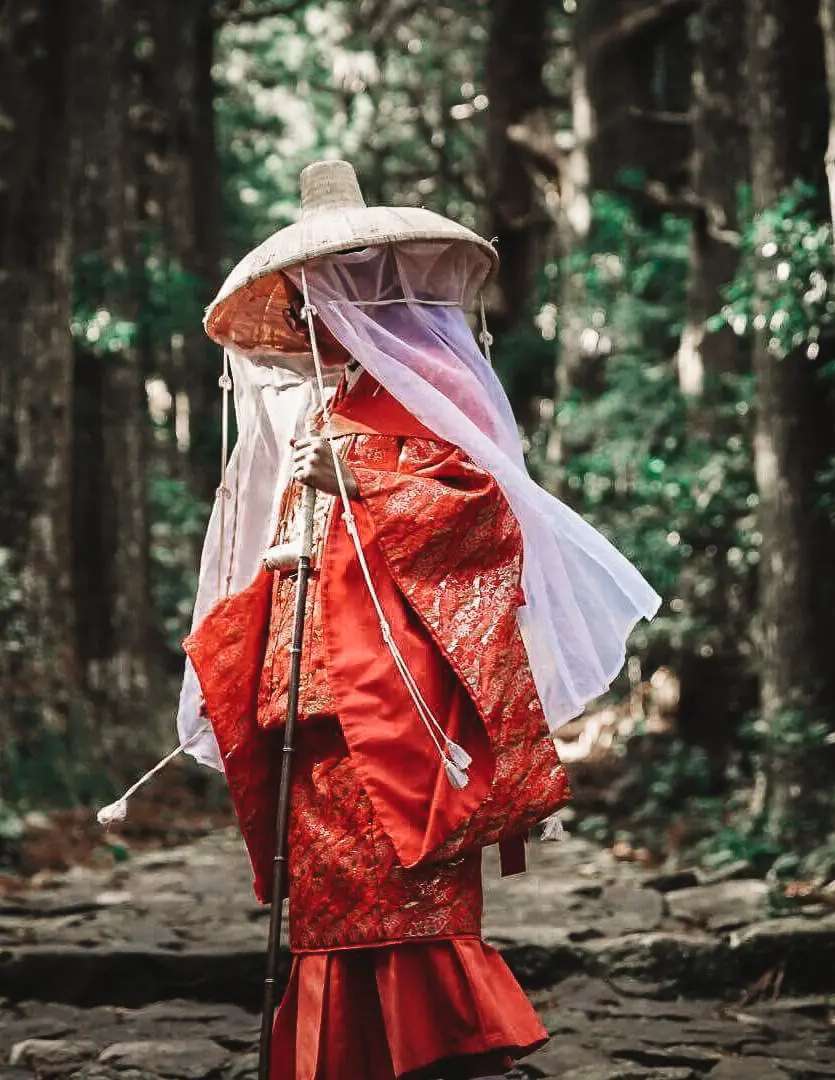
If I had to choose one word to describe the entire experience of hiking Kumano Kodo, it would be: spiritual. There was something deeply profound about being immersed in wilderness, following in the path of ancient Japanese pilgrims for several days. Those long days in complete silence, discovering numerous historic temples and sacred sites in the forest feel like discovering another world entirely. Here is a complete guide on how to hike Kumano Kodo in Japan.
History
The history of this trail dates back as far as the year 600, when Buddhism first arrived in Japan, however, the area has been regarded as being a sacred site since prehistoric times. The first pilgrims said to complete the pilgrimage of Kumano Kodo did so in the 800s. Even back then, there was no discrimination as to who could make the trek. From Japanese emperors, to wealthy nobles, to the everyday man; people from all walks of life made this long journey to seek religious rites and purification.
In 2004, the Kumano Kodo became a UNESCO World Heritage Site.
Kumano Kodo Today
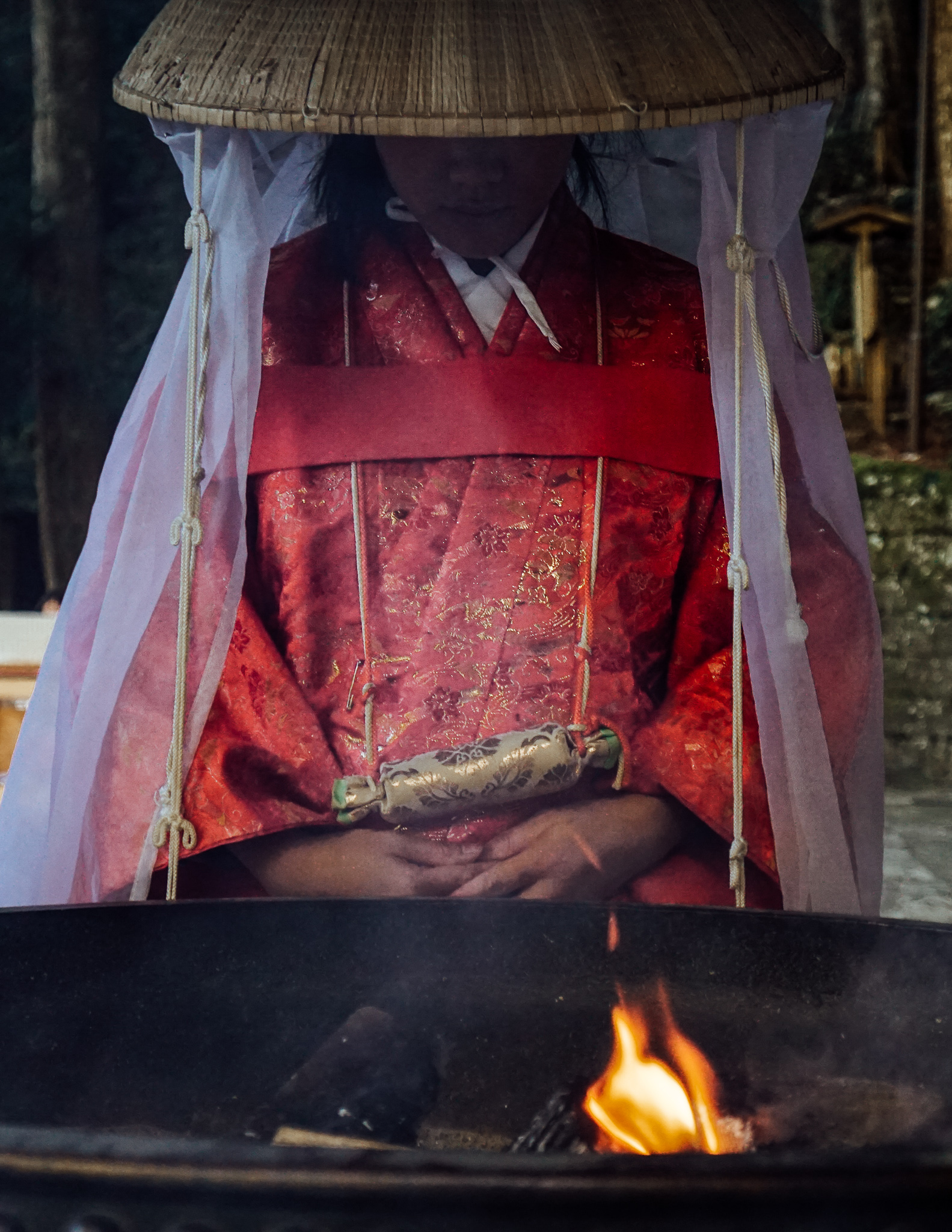
Back then, this would have been a very difficult journey, as it would take you deep into the untamed forest, across steep and treacherous terrain. Today, the path is mostly well maintained and easy enough for the experienced trekker. You may even cross paths with the random highway or two (thanks modernization).
To hike Kumano Kodo is an outdoor adventure like no other. Not only are you retracing the steps of ancient pilgrims, but you are passing by the very temples and sacred sites they used to worship in. You will pass countless temples, ojis (ancient shrines) and other elements to show you the unique, spiritual side of Japanese culture. Not to mention, the wild beauty of the Kii Mountain Range, which will have you in sheer awe every single day.
When to Go
When planning to hike Kumano Kodo, you should strongly consider the weather. Japan has a temperate climate, and it very much has 4 distinct seasons. The altitude of the Kii Mountains makes it a bit cooler year round than the national average as well. Since the weather is drastically different from season to season, planning when to go will dictate your experience in some ways.
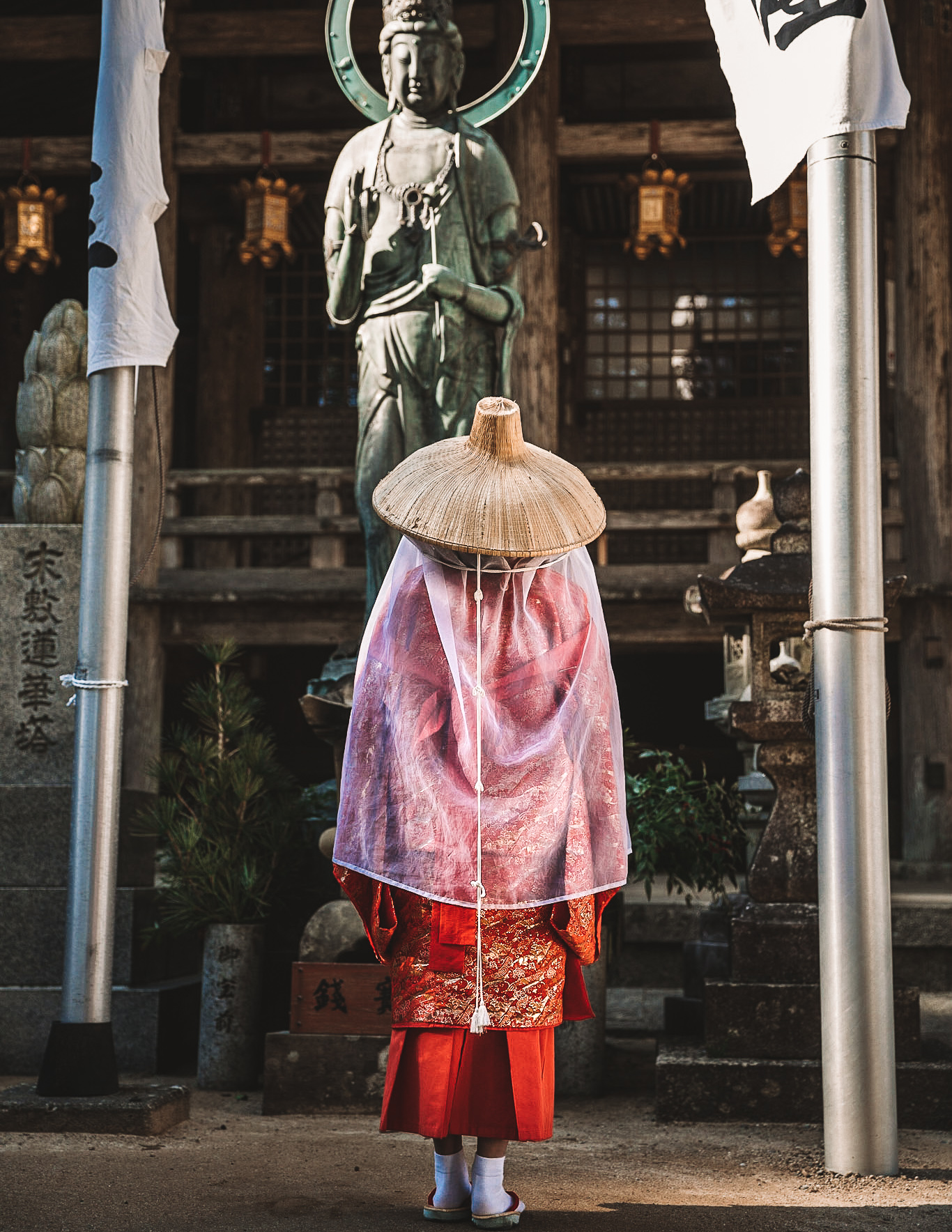
Spring
Many people choose to hike Kumano Kodo in spring because of the cherry blossoms. By no means is this trail one of the best places to view cherry blossoms, but they will be present, and make beautiful framing for when you pass by the temples and villages.
Daytime temperatures are usually between 10 – 15 C, which is pretty ideal. It’s warm enough to hike in a t-shirt during the day, when your body will be hot from all physical activity.
But bear in mind this is a popular time to trek, and you will encounter more people on the trails. You will also need to book your accommodation well in advance to secure a room, a feat made more difficult by the already limited capacities. Unfortunately, wild camping on Kumano Kodo is not permitted.
Summer
Summers in Japan are very hot and humid. Luckily, at this altitude you do have some respite from that. But it will still be considerably hotter than other times of year, with average daytime temperatures between 25-30 C.
Factor that in with hiking and carrying your pack, you will definitely feel hot and sticky, and the heat may slow you down if you aren’t used to trekking in these conditions. Summer also sees the most rain, so that is another disadvantage.
If you do hike Kumano Kodo in summer, a positive is that the mountains are very lush and green this time of year, due to the heavy rainfall. The rice fields you pass during summer will be full and very green. There are also some festivals to look forward to in summer on the Kumano Kodo trail.
You also have the advantage of maximum daylight hours, so you can take your time each day on the trail.
Autumn
Autumn is another popular season to hike Kumano Kodo because of the beautiful fall foliage in Japan. The trail has lot’s of trees bearing the iconic maple leaves in this time of year. The temperatures are also very are comfortable, with daytime temperatures between 10 – 15 C.
Daylight hours are still long, and the overall conditions are good in this time. The only negative is that this season falls into typhoon season in Japan. In the unlucky event that one hits this area during your trek, you’ll have to cancel it completely.
Winter
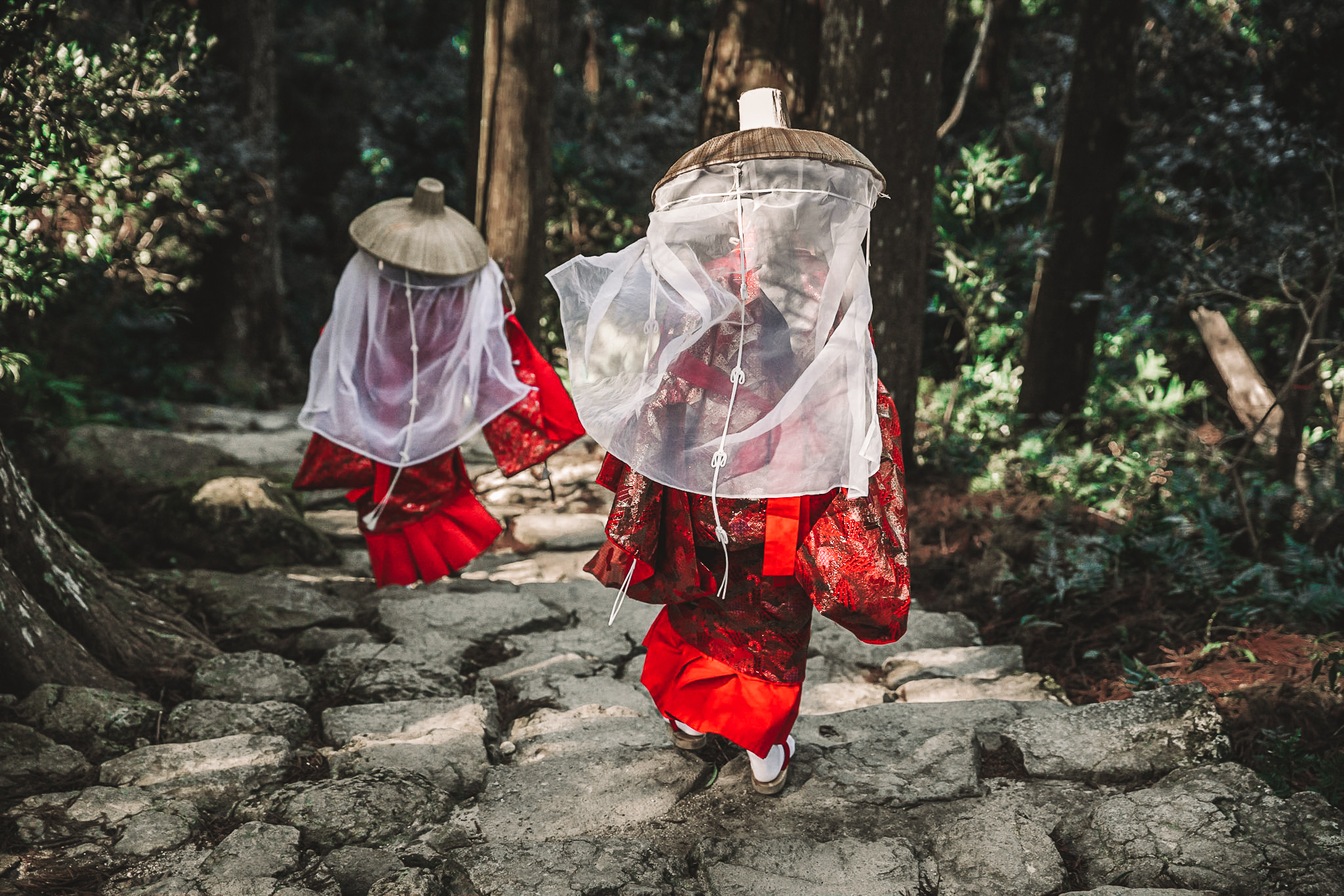
Winter in Japan gets ver cold, with daytime temperatures as low as 5 C. This season does see the least rainfall, so that is a positive aspect. However, if the temperature drops, it’s possible to experience snow.
The biggest downside to hiking in winter is definitely the shorter daylight hours. The sun rises after 7am and goes down a little after 4pm everyday in winter. If you aren’t comfortable hiking in the dark, this could be a problem on the longer trekking days.
Winter is the least popular season, so you will have the trail mostly to yourself. However, some guesthouses may be closed, so there are less options to choose from. The upside to this, is that the ones that do remain open will have a lot of vacancy.
Which Season is Best?
I hiked Kumano Kodo in winter to avoid crowds and can report a positive experience. Although we got every type of weather, from snow, to rain, to wind, with proper gear this shouldn’t be an issue. I would recommend trekking in this season to those wanting a more tranquil experience in nature. We had many days where we didn’t come across a single person on the trail and it was simply glorious.
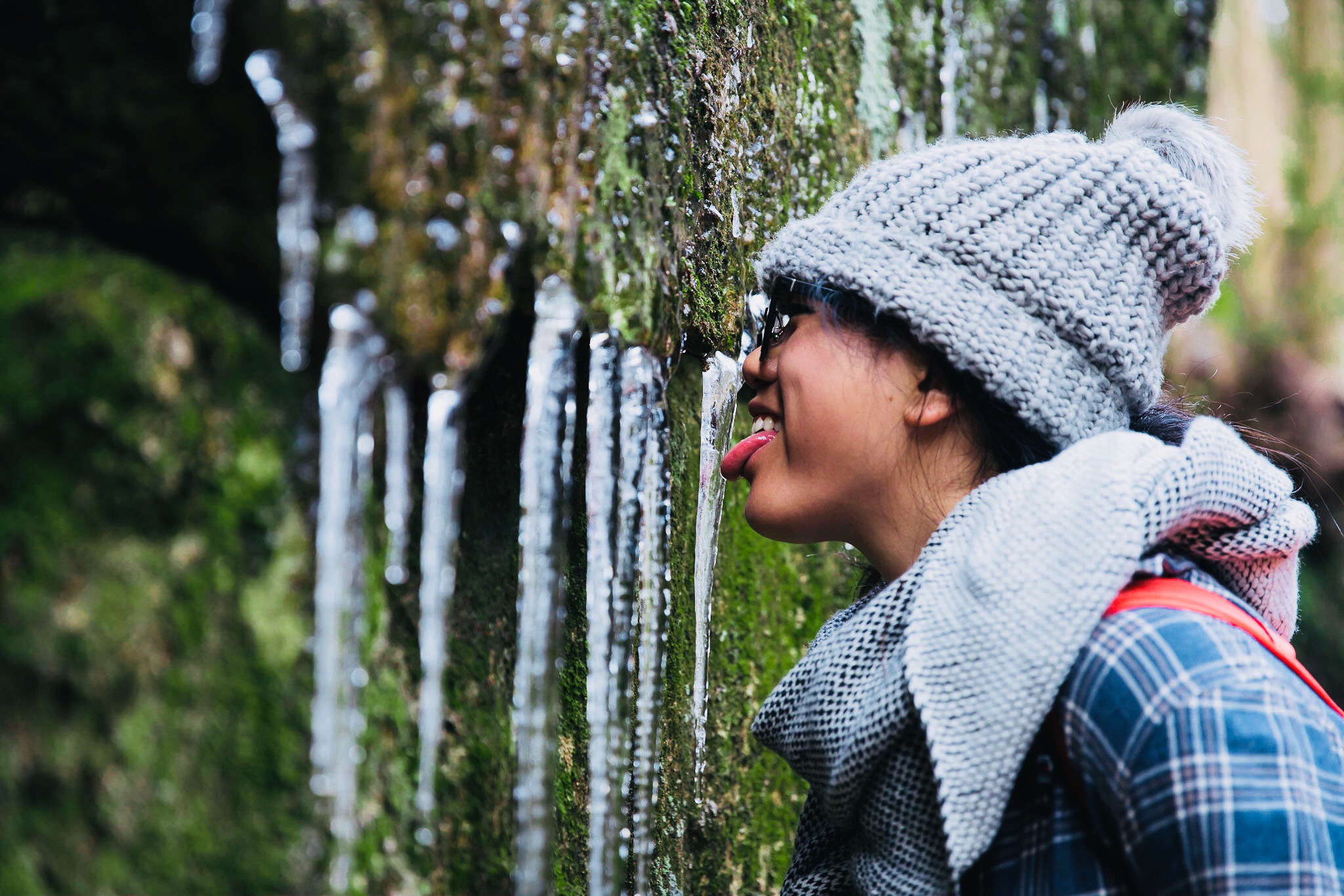
Wildlife in Kumano Kodo
In this area of Japan, there haven’t been any recent reports of bear sightings, so you can hike Kumano Kodo without fear of crossing ones path. However, should you want to err on the side of caution, one person in your group can still wear a bear bell.
While you won’t see bears, you may see deer during your trek. The ancient pilgrims saw them as a positive omen, and regarded them as protectors of the forest, allowing pilgrims safe passage.
Besides deer, you likely won’t encounter many other mammals. But you may come across some lizards, toads, and even some tiny freshwater crabs near water sources. If you are lucky, you may see a black kite soaring across the sky.
Dangerous Animals
Vipers
Something you do need to look out for are snakes. The brown viper, known locally as “mamushi” is a venomous snake found all over Japan. Luckily, they are pretty shy and not usually aggressive towards humans. But as a rule, keep your eyes on the path, watch where you step, and always have proper footwear.
Killer Hornets
Also a species that can be found all over Japan are the Japanese giant hornets, also known as the killer hornets. As the name suggests, a run in with this insect can cause major problems, and in some very rare cases, death. They only really become an issue in the summer months, all the more reason to hike in the other seasons.
Spiders on Kumano Kodo
Not a dangerous creature, but a word of caution for anyone who suffers arachnaphobia: please familiarize yourself with the golden weave orb spider before doing this trek. In the wilderness of Japan, there are lot’s of very big spiders, and this mountain range is no exception. I opted to trek in winter because this is the only season cold enough that they vanish from the trail. In any other season, expect to see a lot of bigger than average spiders.
What to Pack
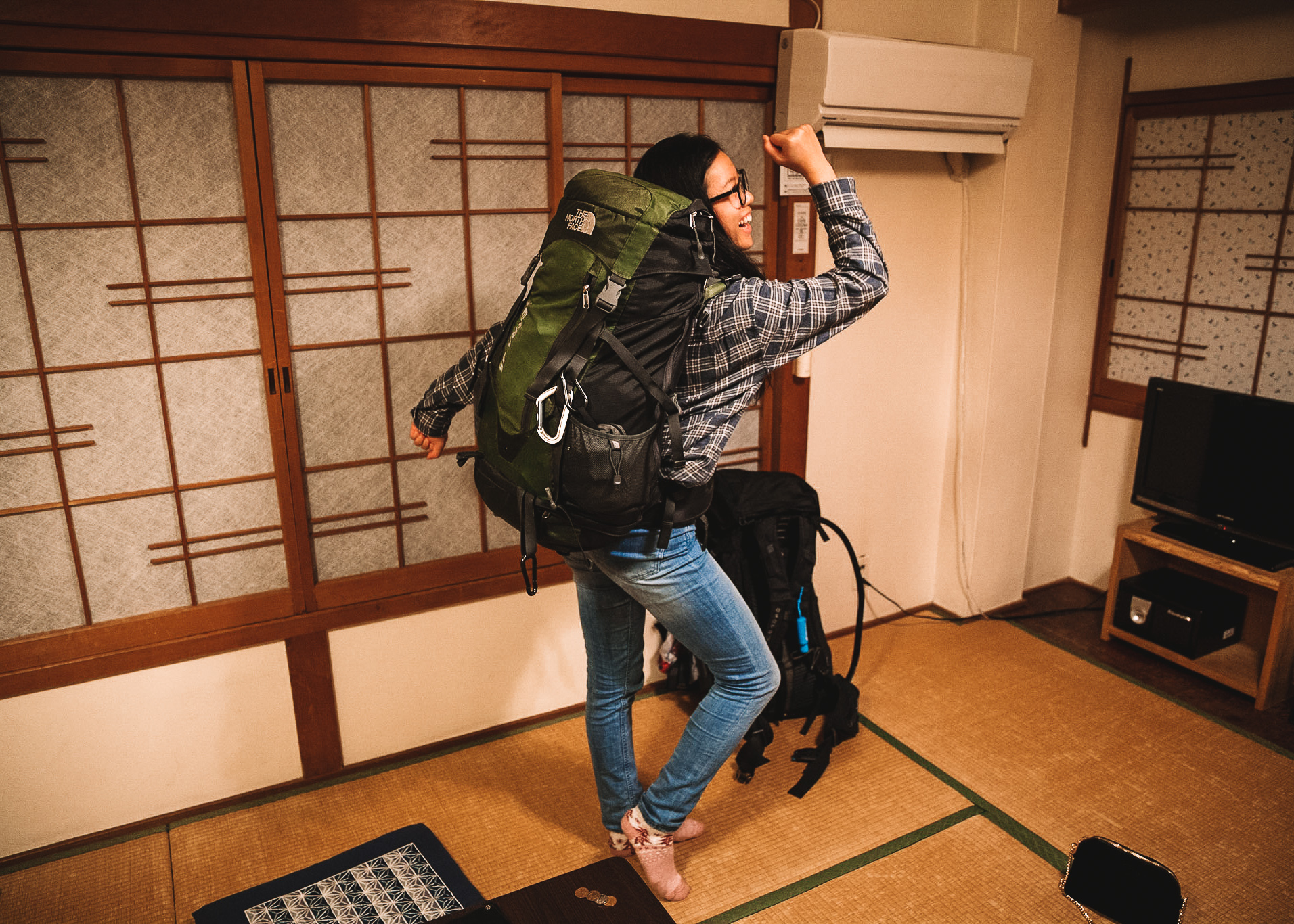
In ancient times, the Kumano Kodo trail went through untamed wilderness. Today, some parts of the trail intersect modern day roads or other signs of civilization. But there are still long stretches where you won’t be near any civilization, and deep in the mountains with access to no modern conveniences. It’s crucial to pack everything you need and might need.
Here’s a complete packing list of what to prepare to hike Kumano Kodo.
Clothing
Hiking boots – proper hiking boots will be ideal, as you’ll frequently walk on rough terrain, cross streams and encounter rain or even snow.
Waterproof jacket – rainfall is prominent in this region in all seasons. bring a lightweight waterproof jacket. If it’s winter, bring warmer layers to go underneath, but honestly you heat up pretty fast if you keep moving.
1-2 Hiking pants – I got away with wearing yoga pants in winter, but you’d do well to bring proper hiking pants.
2 Hiking shirts – you can get away with just two shirts. You will have plenty of opportunities to wash them every time you arrive in a village for the night. If it’s winter feel free to bring two more long sleeve shirts, to use as layers in case it gets cold
3 -4 Pairs of socks – if you get caught in rain, your socks may get soaked. I went through all my socks in just half a day during a downpour. In this case more is better
Underwear – self explanatory
1 Bikini – to wear in the onsens in Yunomine and Katsuura
*optional
1 nice city outfit – to wear in Tanabe and Katsuura (try to keep it lightweight)
Hygiene
Sunblock (in warmer months)
Mosquito Spray (in warm months)
Toothbrush & toothpaste
Tissue papers and/ or wet wipes
Microfiber lightweight towel
*optional
Travel sized toiletries – the guesthouses you stay in should supply shampoo & soap, but you can bring your own if you prefer
Gear
Waterproof backpack – the size doesn’t mater much. my group brought 40 liter backpacks while I got away with a 15 liter backpack. As long as it fits all your supplies and is waterproof
2 Liter water bottle – in warmer months, you may need more
Poncho – it is almost guaranteed to rain at some point on your trip, regardless of season
Flashlight/ headlamp – to use at night and if you get caught on the trail after nightfall
Portable Charger – to keep your devices charged, in case of emergency
*optional
Camera + lens
Emergency Supplies
- bandaids
- antiseptic
- iodine
Food Supplies
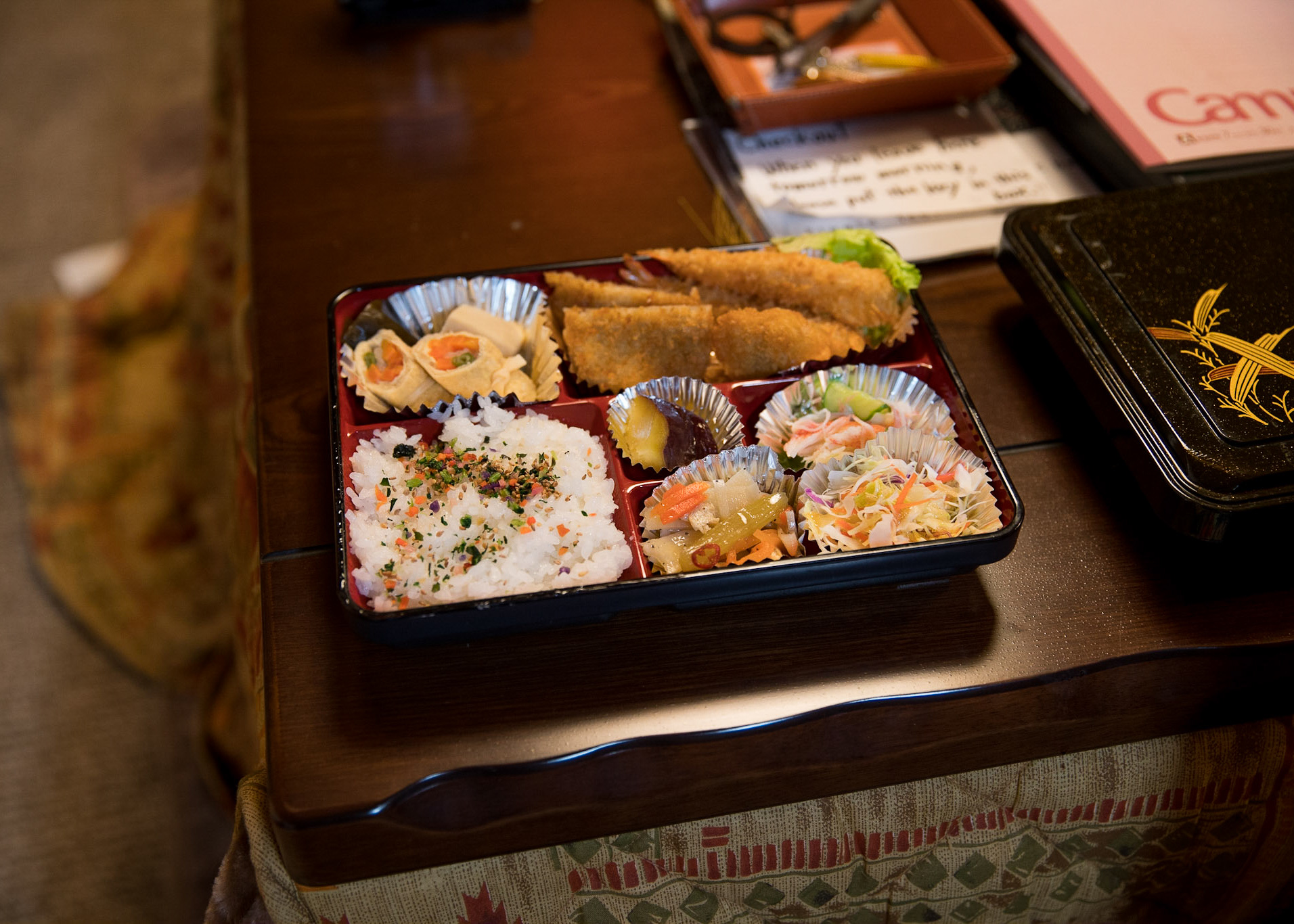
Depending on your arrangements with the guesthouses you book, you may not need to pack all your food. Usually, trekkers will opt to have their breakfast and dinners at the guesthouses. For an extra fee, the guesthouses can also prepare you a little lunch bento each morning, so you just need to pack some snacks. Some good options are:
- Nuts
- Chocolate
- Onigiri (riceballs)
- Energy bars
How to Prepare
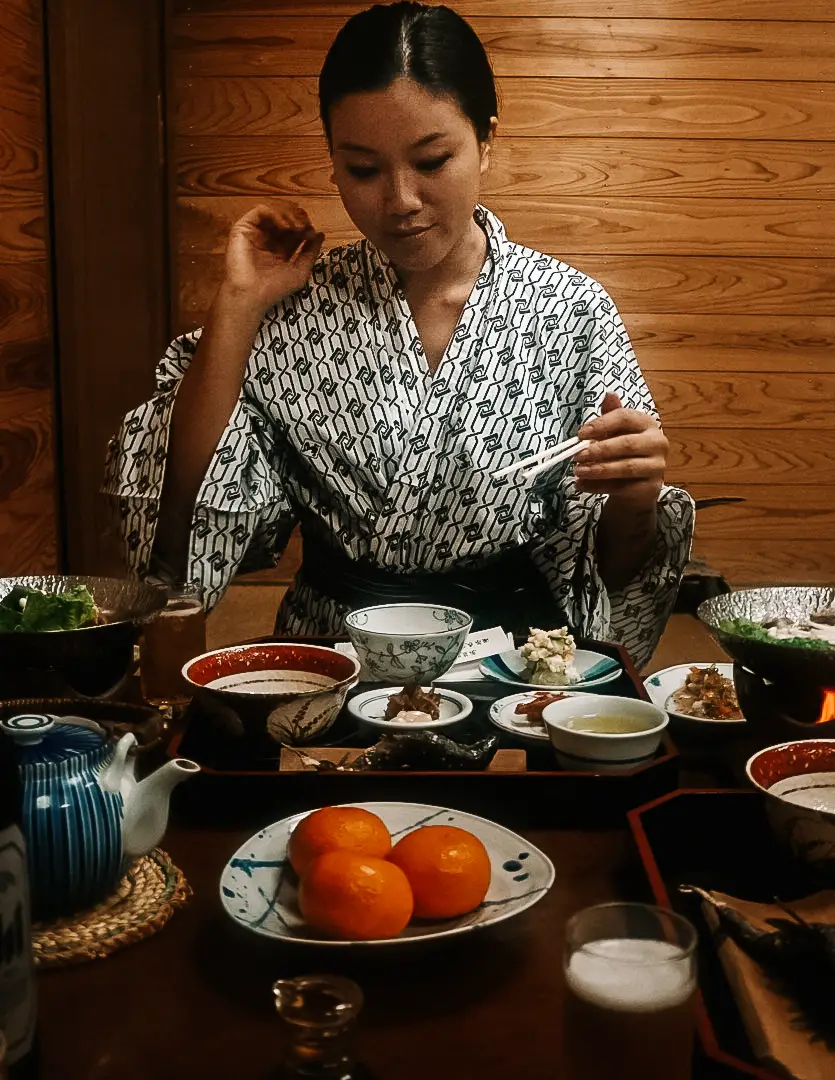
Booking Accommodation
The first step in preparing for your trip should be booking your accommodation. Further in this article, I will share an ideal itinerary and where to stay overnight according to the planned itinerary.
To book your place, the easiest way is to go through this website here.
Since a lot of these guesthouses, (locally called minshuku) are family owned, they also don’t speak much English. This website takes care of all the communications for you, and you’ll have a digital copy of your entire itinerary to refer to.
Booking should take place a couple months prior to your trek. If you are visiting in the high season (cherry blossom season or during a festival) it’s ideal to book even earlier.
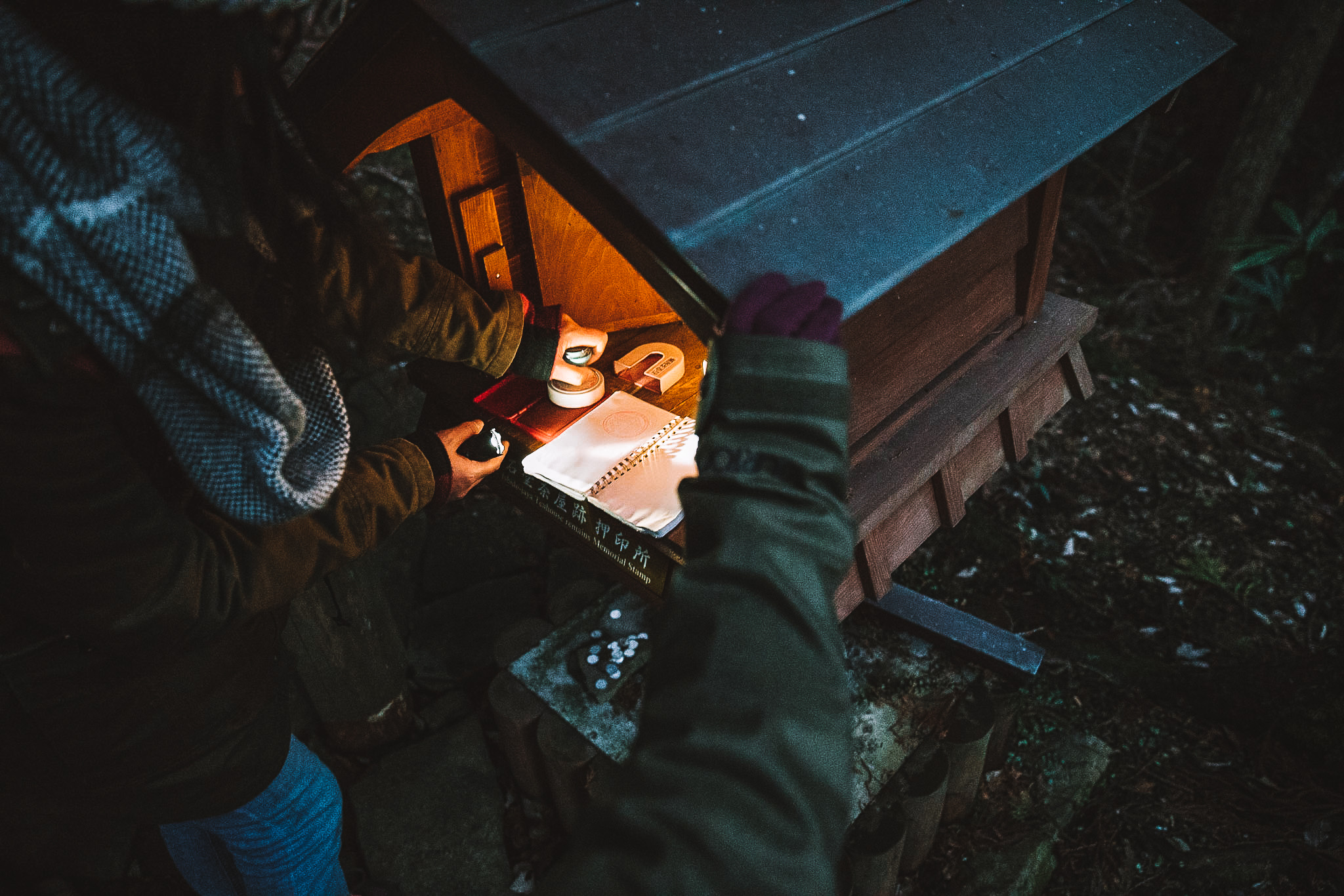
No Wild Camping
You must remember that Kumano Kodo is not just a hiking trail, but a sacred pilgrimage site. For this reason wild camping is extremely frowned upon. If you respect the local culture, please do not do it.
I have heard there are designated campsites in some villages such as in Chikatsuyu, Kawayu Onsen, Wataze Onsen, and Koguchi. If you want to camp you can look into those.
Camping may be a bit cheaper than a guesthouse, but meals will likely not be provided. And since these are rural parts of Japan, you may not find markets very easily, so if you choose to camp, you will likely need to pack all your food.
Training and Conditioning
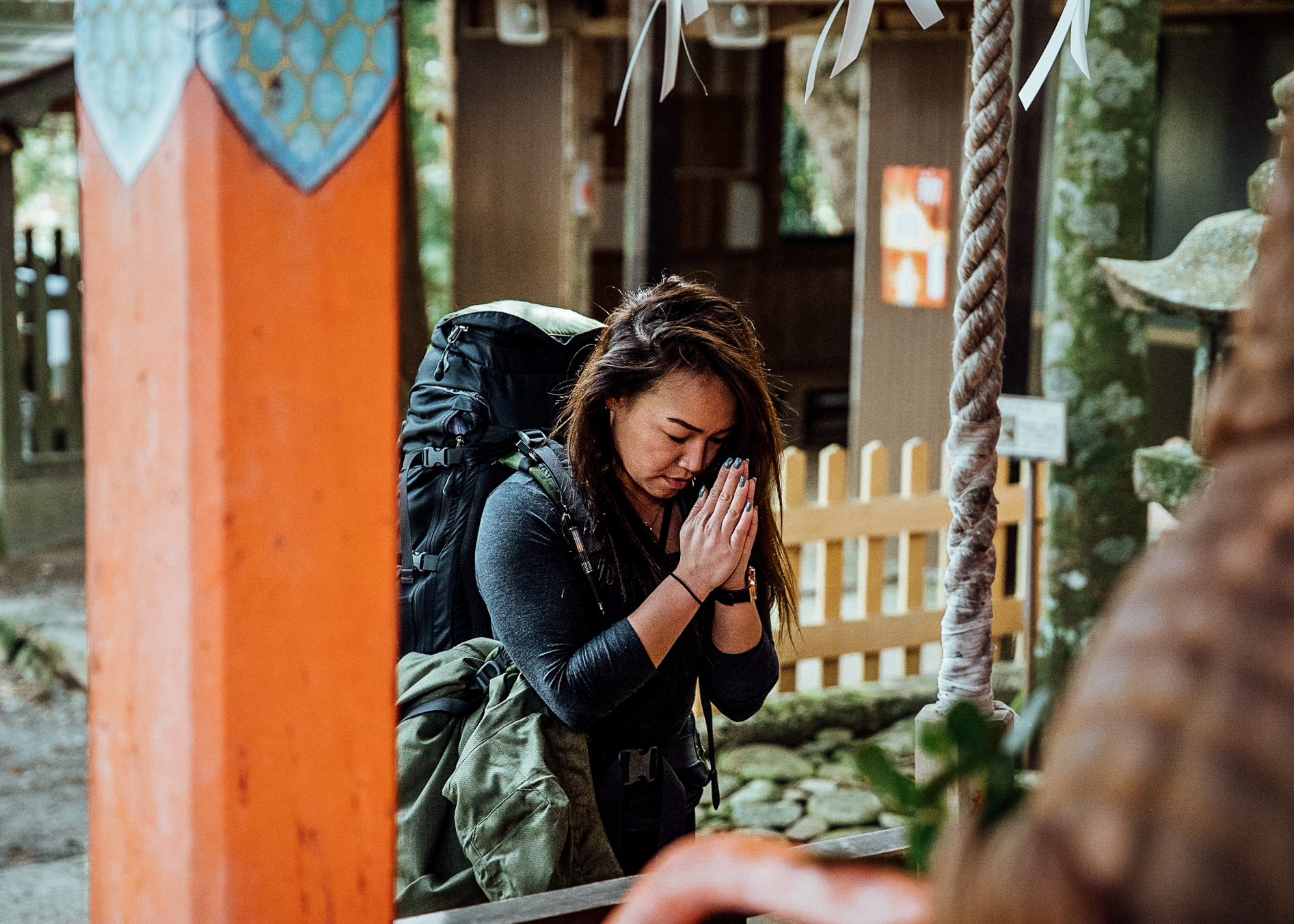
Something not to be overlooked before you hike Kumano Kodo, is that you need to evaluate your fitness level.
This is a serious trek, and although I think it’s suitable for most people, it doesn’t mean you can show up out of shape.
It’s necessary to train and be fully prepared beforehand. Hike your local trails or hit the gym and work on your cardio. It’s a strenuous journey, and everyone in my group was hurting by the end, despite being experienced hikers.
Wifi Hotspot
It’s a good idea to have access to internet, in case of emergencies. It’s easier to get a mobile hotspot when you arrive in Japan than a SIM card.
Also, if you are trekking with a group, you can all share the hotspot, making it a cost effective option. This will come in handy should you get lost, and need to contact your accommodation to let them know you will be late, or any other situations which may arise.
Getting to Tanabe
To get to the starting point of the trek, you’ll need to get to Tanabe. The station you should arrive in is Kii-Tanabe Station.
As far as major cities on the tourist trail go, Tanabe is most easily reached from Osaka. It takes about 2.5 hours, if you take the direct line on the Kuroshio Line.
Full Trek Itinerary
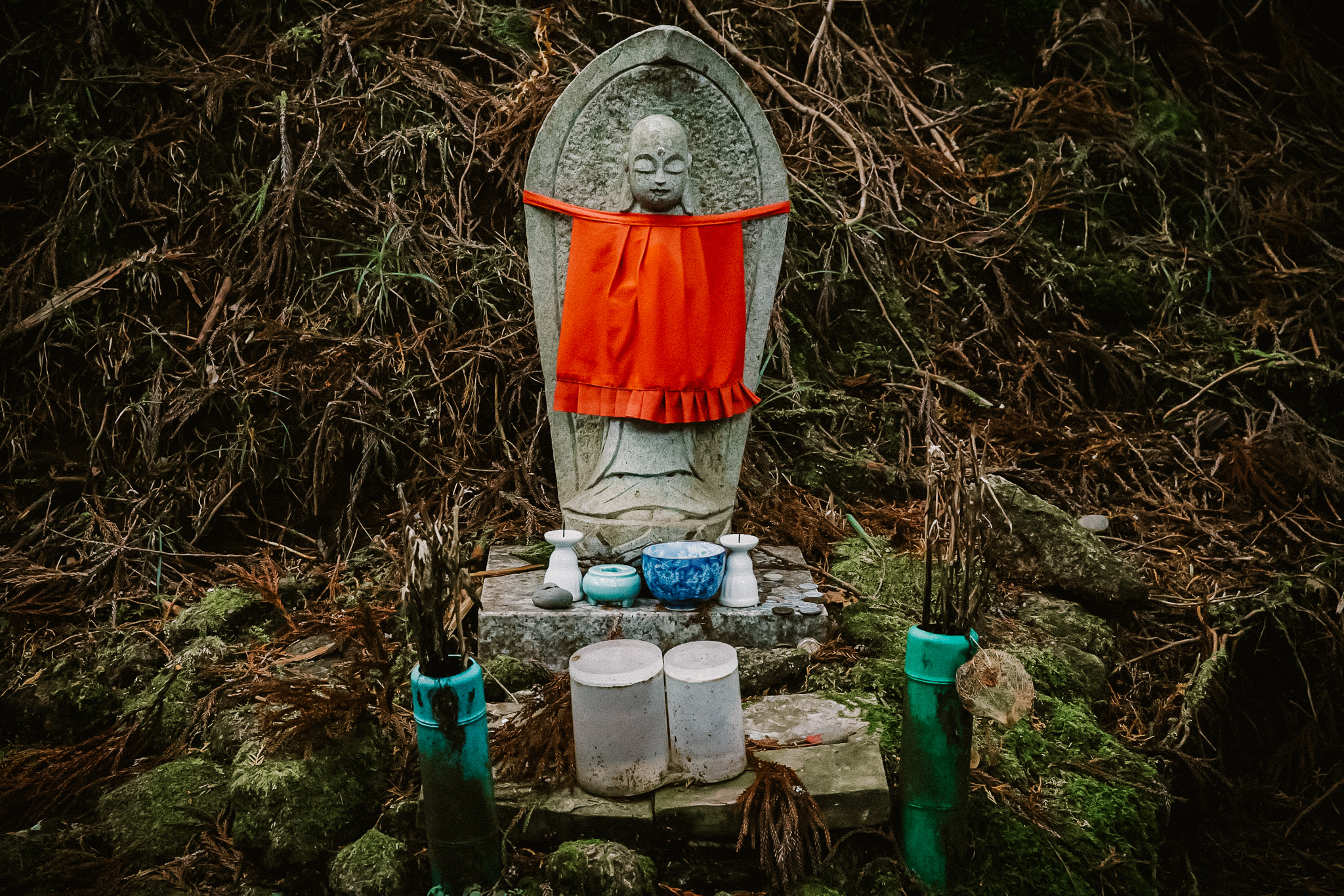
Here, I’ll provide a full itinerary based on someone with above average fitness level. At this level of fitness, you can complete the whole trip in 6 days, with 4 days of trekking involved.
On trekking days you will walk on average between 20 – 30 kilometers, carrying a 15 kg pack (this is why I said conditioning is key).
If this does not sound like you, no worries, you can still do this trek. You’ll just need to either pay to have your backpack transferred between accommodations (costing more money), allowing you to walk faster without weight, or just reduce the walking distance each day.
If you choose the latter, you’ll need to extend your trip by 1 or 2 days to complete the trek at a slower pace.
Day 1: Arrive at Tanabe
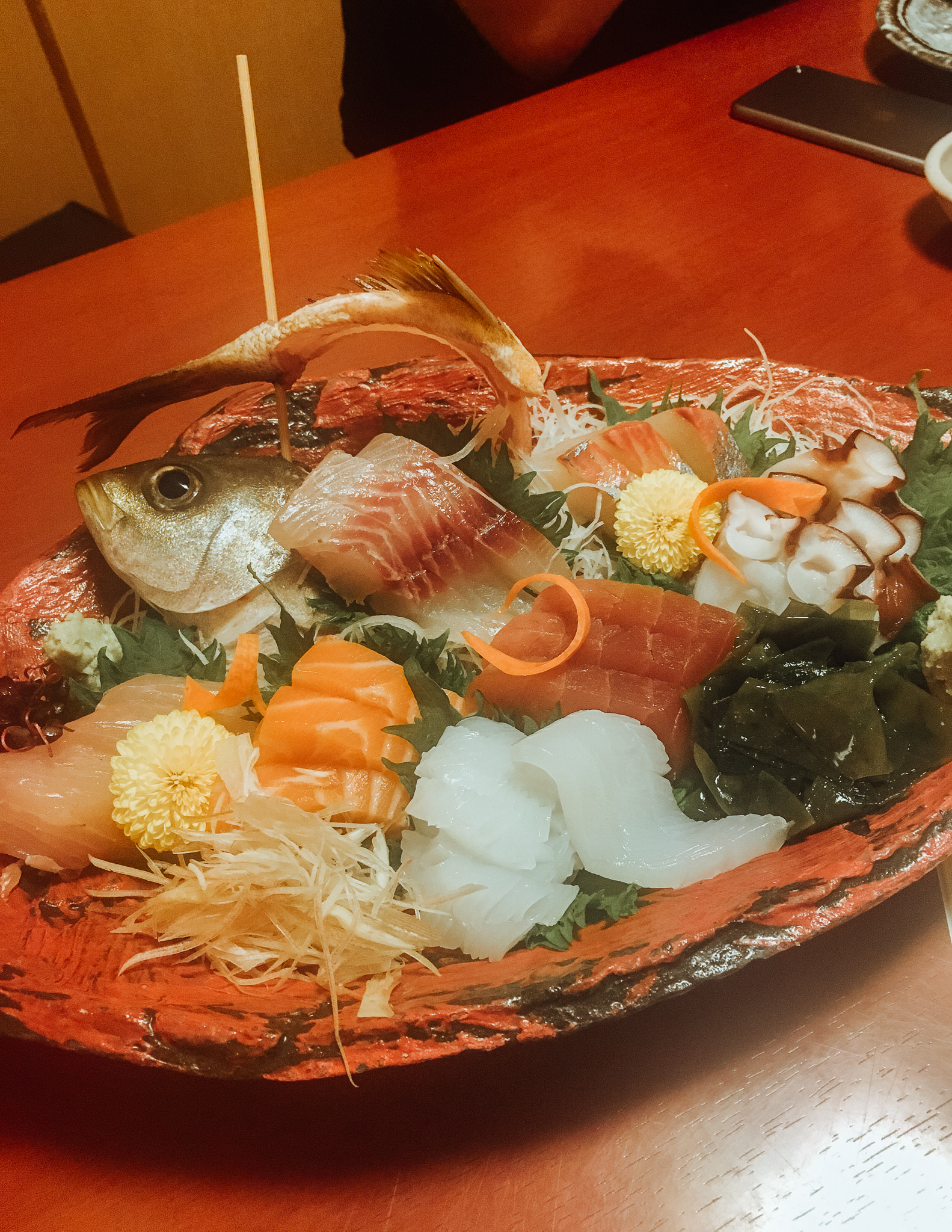
Tourist Information Center
Once you arrive at Kii-Tanabe Station, it’s ideal if you head to the tourist information center and check the time of the bus to the trail head for the following day.
Find the tourist center here.
The center closes at 6PM, so if you are arriving after that, don’t worry. The information should be somewhere on the wall.
Going Out in Tanabe
If you are up for it you can head directly out for the evening on the town. Conveniently, the main nightlife area is directly across from the station.
Tanabe isn’t known for nightlife in the same way Tokyo or Osaka is. However, the nightlife setting here is more intimate, yet still fun.
A good starting point is Ekimashin Street, where you’ll find a narrow street lines with traditional style restaurants and bars. We opted for some sashimi from Shinbe, to get some quality protein in before our trek.
You will have to exercise some self control as to not get drunk the day before a 4 day trek, because there are some great sake bars in the area, and even some small cocktail bars.
Where to Stay
We stayed at Buddha Guesthouse, which is the best budget option in town. It was clean and very comfortable for our one night stay.
Day 2: Hike to Chikatsuyu
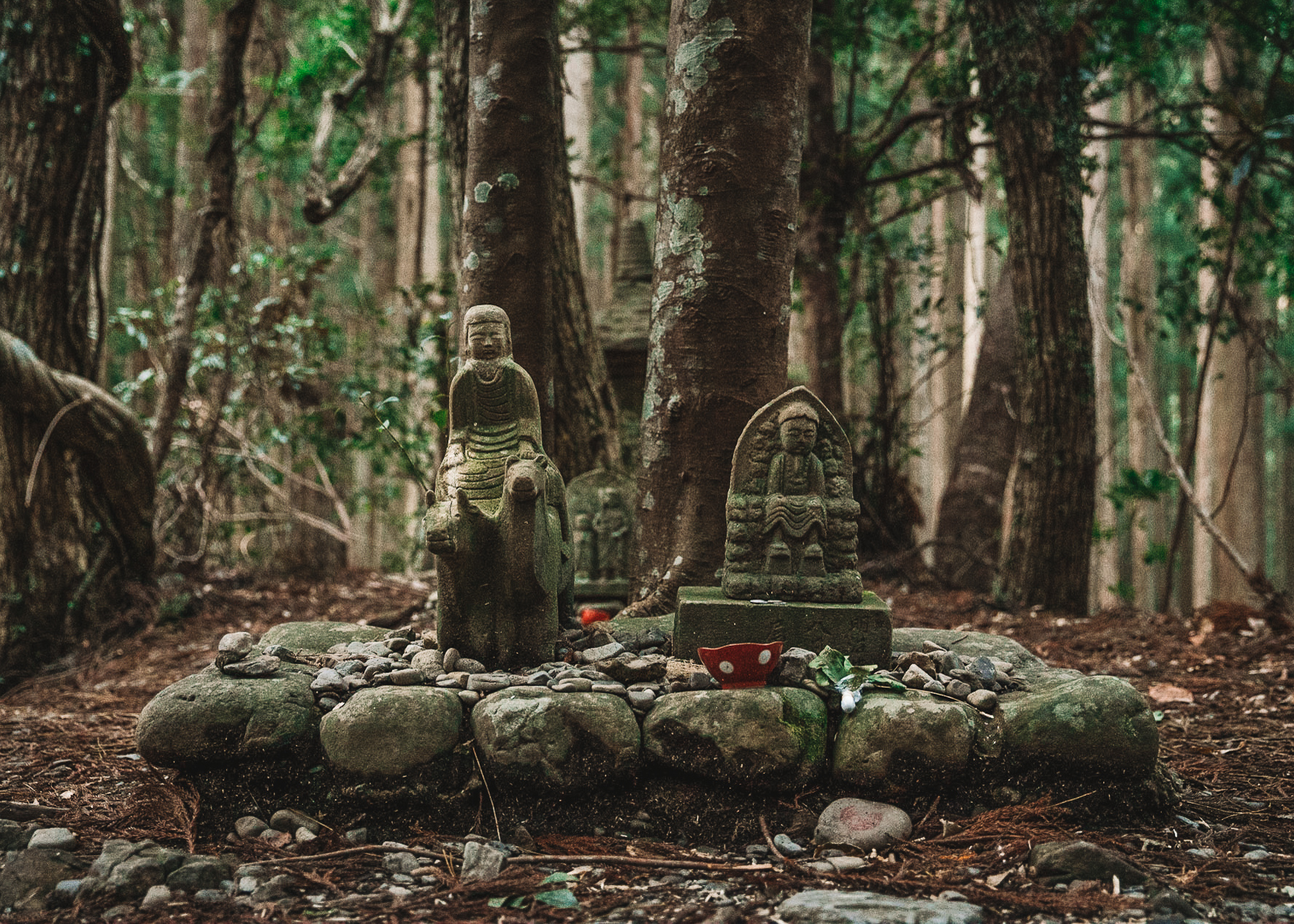
Distance Trekked: 13.3 km
Total Elevation Gain: 1010 meters
Trekking Time: 8 hours (including stops)
Main Sites: Takahara Rice Terraced Village, Gyuba-doji, Chikatsuyu Village
Where to Stay: Happiness Chikatsuyu
To start your hike in Kumano Kodo, you must get to the trailhead.
The first day, you’ll need to wake up early to get to the Kumano Kodo trail first by bus. At the Tanabe Tourist Center, you’ll find a ticket machine. Buy a ticket for “Takijiri”, which will cost 960 yen ($9 USD).
Check the current bus timetables here, but there should be a bus departing before 9 AM.
You’ll wait as bus stop #2 for your bus. The journey takes about 40 minutes.
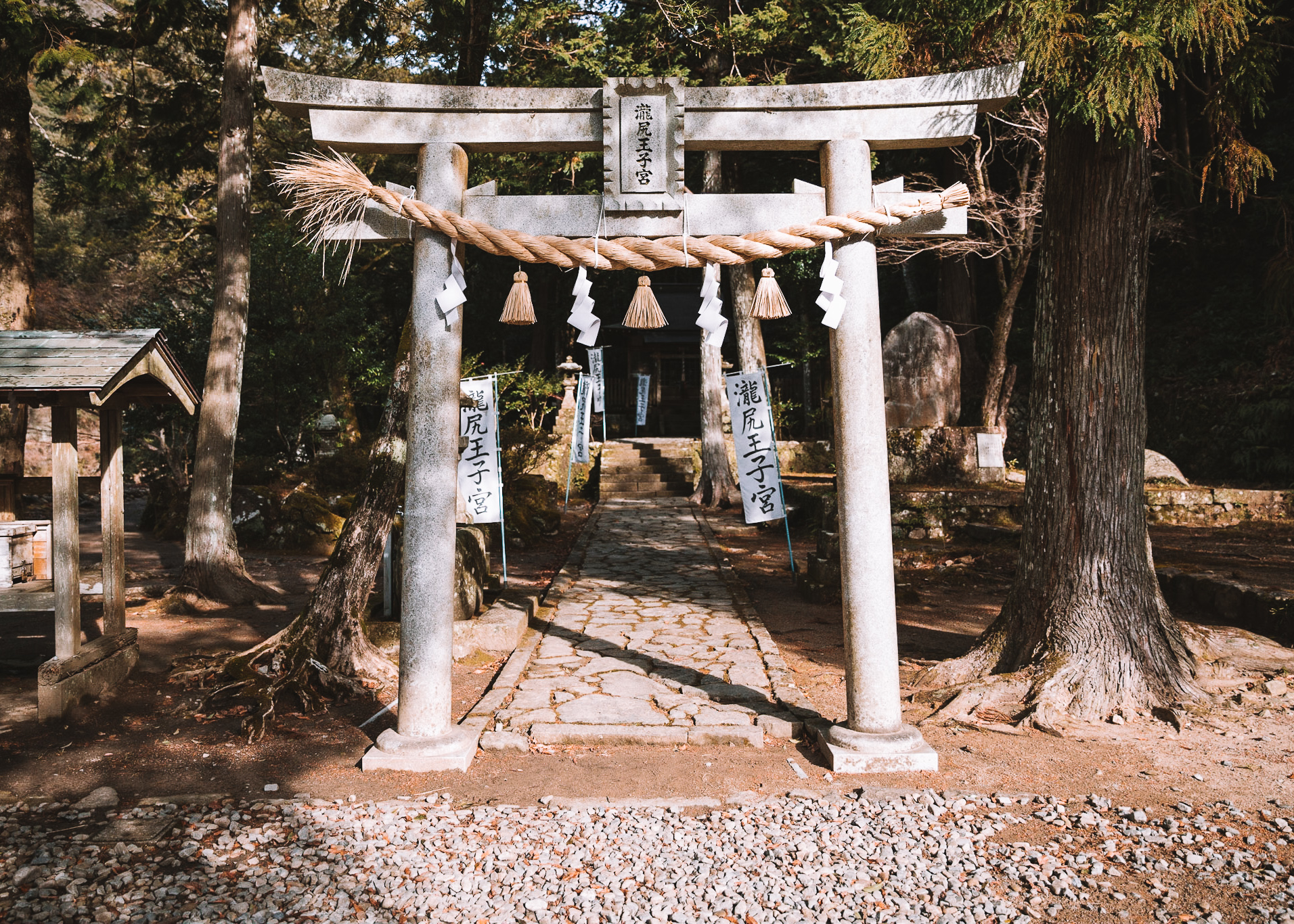
Start the trek at Takijiri oji
Once you arrive at the trail head, you will find yourself at the Takijiri oji, your first shrine of the Kumano Kodo trek. It will be a steep ascent up for a while, until it levels out a bit.
Takahara
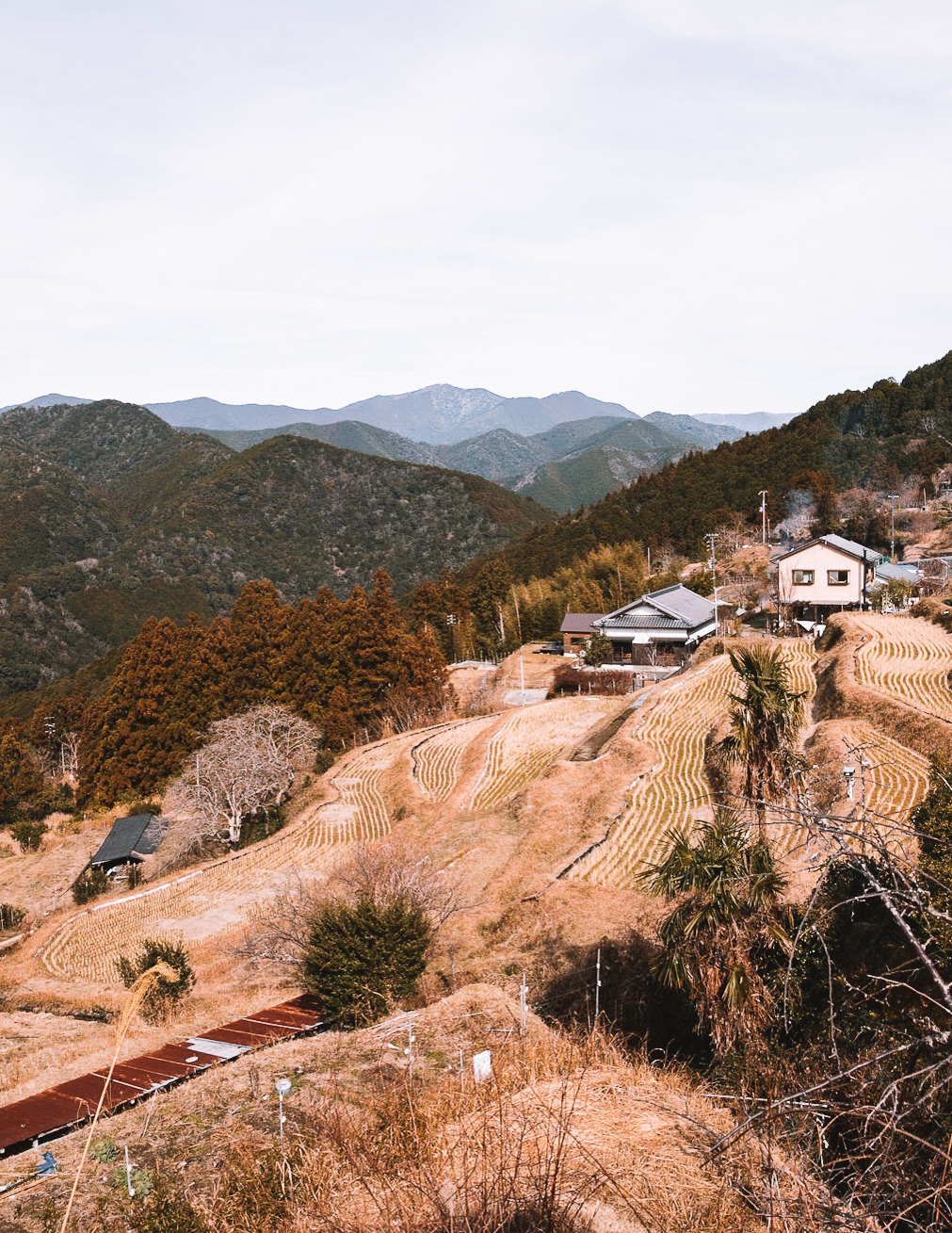
After trekking about 4 km, you will reach Takahara. Depending which season you visit, you may get a view of lush green rice terraces, or just brown grass. If you trek in winter, unfortunately it will be the second one.
If you visit in summer, you may even see the terraces filled with water, a truly iconic view especially when it reflects the sky. This is also a good spot to have lunch.
Chikatsuyu Village
After that continue trekking through the forest, where you’ll have a long stretch of steady incline, passing a few more ojis on the way. After the peak, you have a steep descent into the valley before reaching Chikatsuyuu, a quaint mountain village where you’ll spend the night.
If you arrive early enough, be sure to explore the village itself. It’s a quaint, traditional Japanese mountain village, with a few of its own shrines as well.
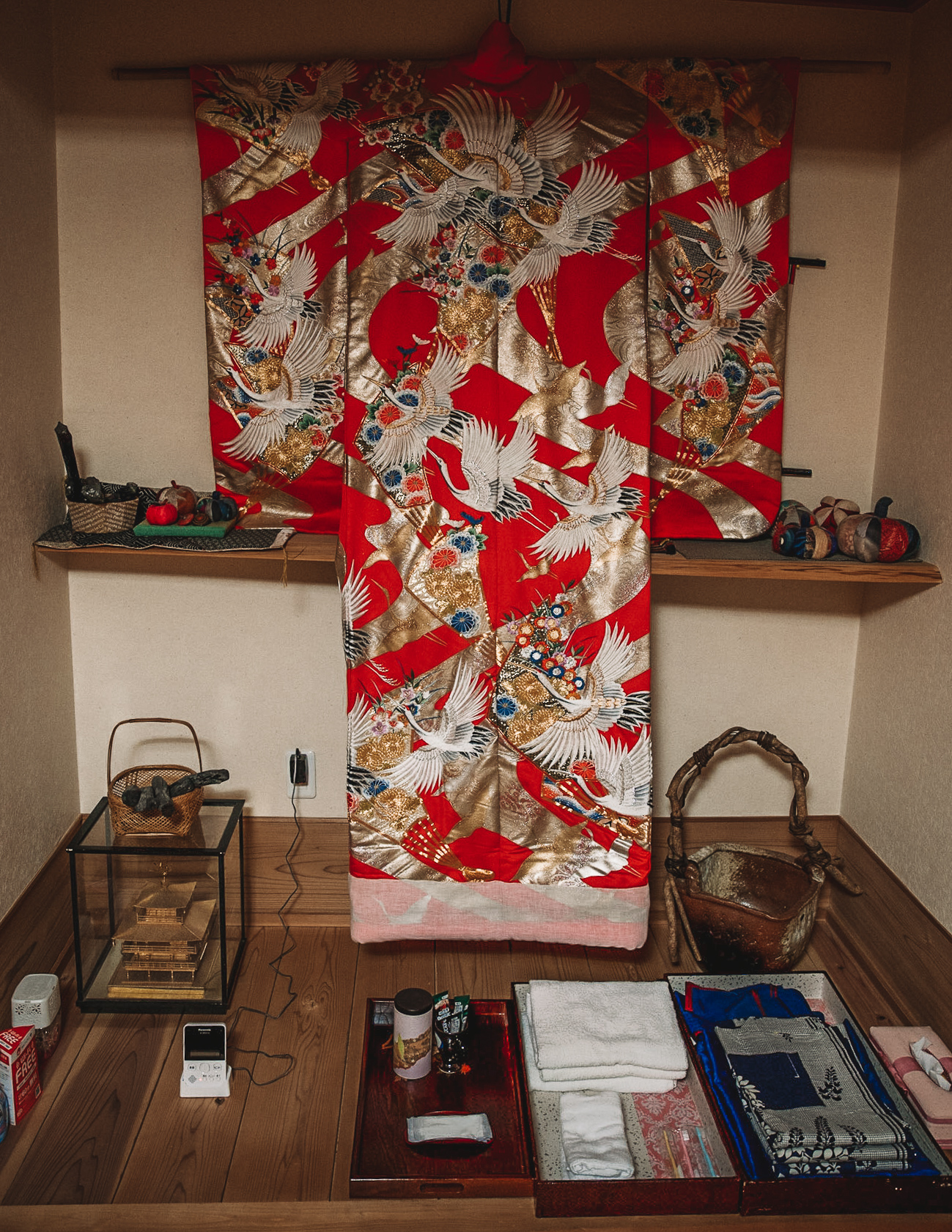
Day 3: Hike to Yunomine Onsen
Distance Trekked: 36.3 km
Elevation Gained: 1700 meters
Trekking Time: 14 hours (with stops)
Main Sites: Toganoki-jaya Teahouse, Tsugizakura-oji, Yunomine Onsen Village
Where to Stay: Minshuku Yamane
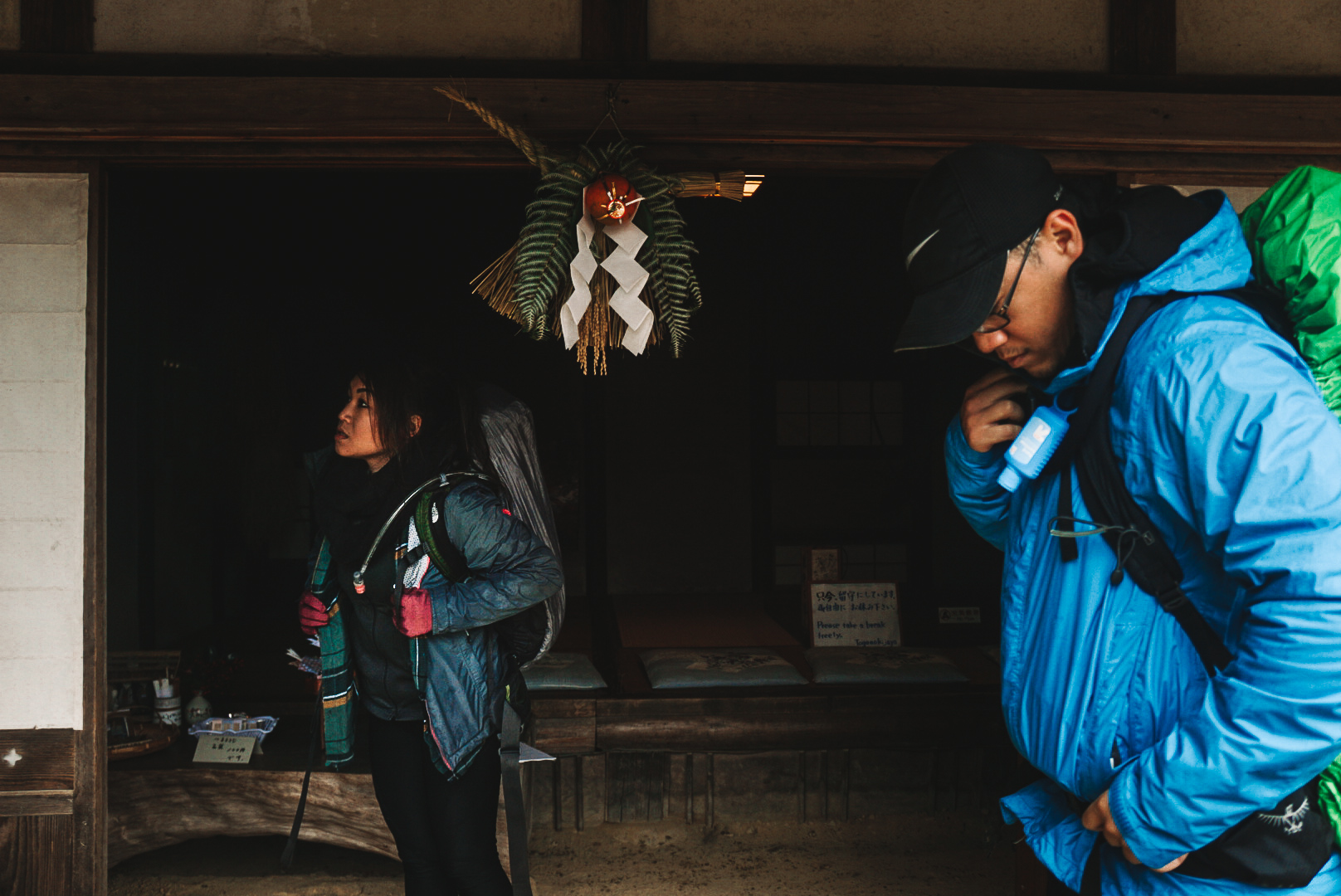
You’ll need an early start to complete this long day. While the elevation gain is mostly steady, it’s a long distance to cover, and you’ll be hiking across multiple terrains, including some switchbacks.
It’s best to plan for a 12 – 14 hour trekking day, which will have you averaging 2 miles an hour, with enough breaks in between.
Early on in the day, you will pass Toganoki-jaya Teahouse, a cute place to stop by.
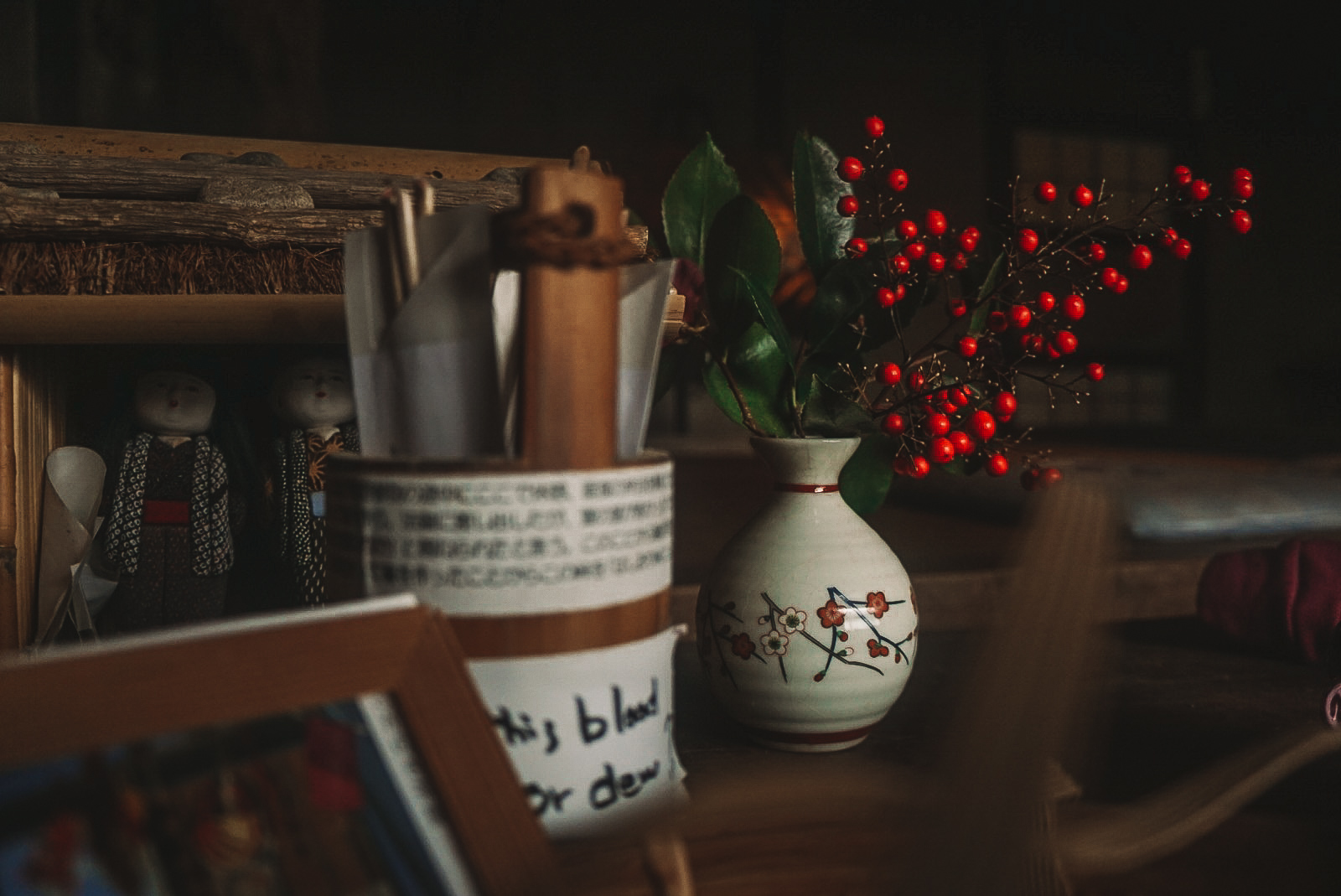
Then, you will walk through the forest, crossing streams and coming across ancient ojis in the wilderness.
On this day, we encountered the heaviest rain of the trek, and were glad to use the ojis for shelter and protection. If you do this, be sure to say a little prayer to each one before you leave thanking them.
You’ll pass many temple on this day, the most notable one being Tsugizakura Oji. Although there are many points of interest, try not to spend too much time any any of them.
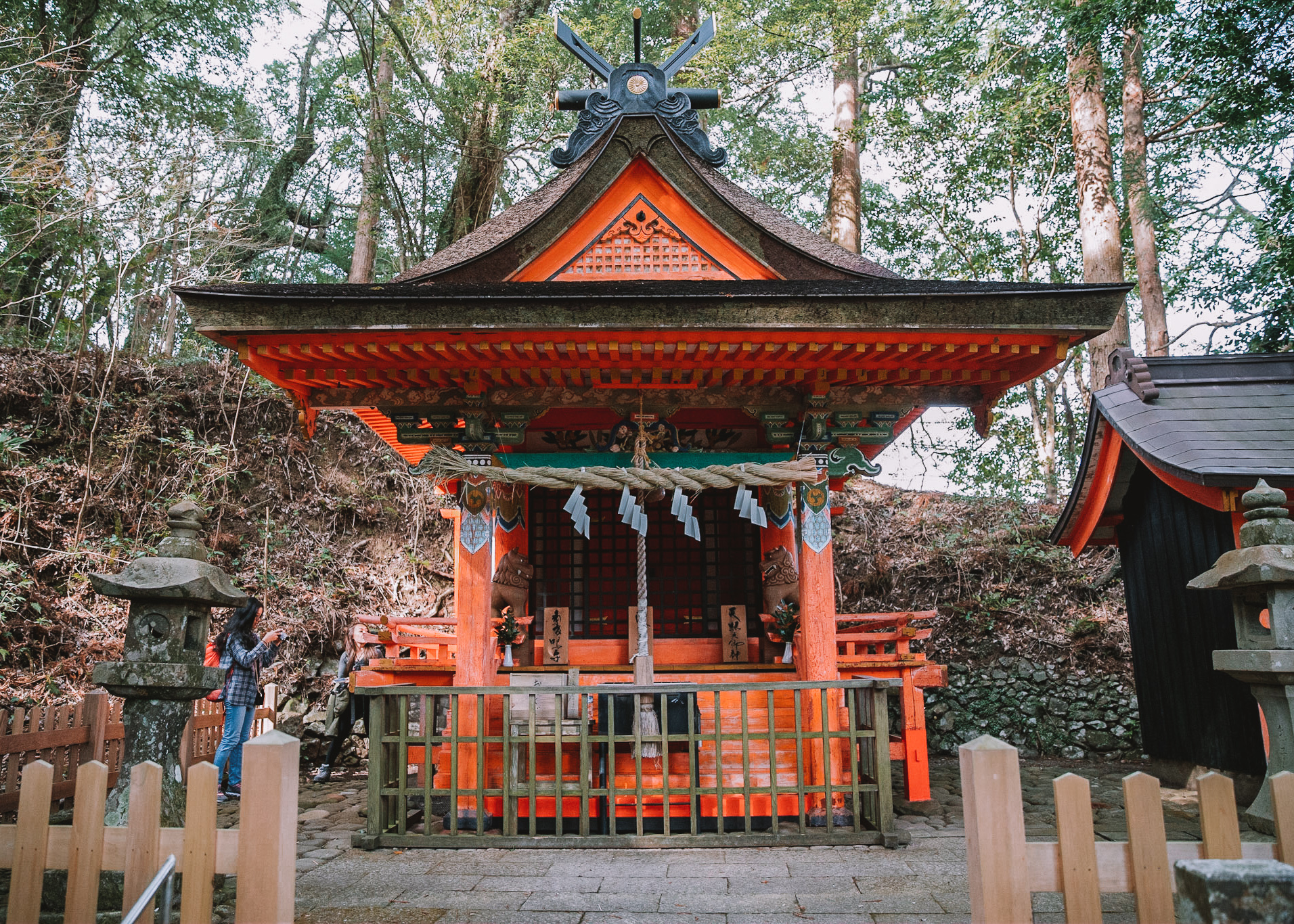
Time management will be key to making it to Yunomine onsen before nightfall. Your accommodation will be in a hotspring village, so you’ll want enough time to enjoy the bathes too!
Arriving at Yunomine Onsen
Techincally, Yunomine Onsen village is not the most direct path through the Kumano Kodo. It takes a slight alternative route, but you don’t lose any time and it is totally worth the visit. This onsen village has over 1800 years of history, and has been a rejuvenating stop for pilgrims for over a century.
By day 2, you will be halfway through your trek and believe me, you’ll be glad you spent the night here and relaxed in the healing hot springs. Its the perfect place to unwind and sooth your sore muscles.
Be sure to check out the village before you leave. You can find communal cooking onsens around the village, where locals come to cook their food in the thermal waters. If you want, you can purchase some veggies or eggs from the market, and try for yourself.
Minshuku Yamane
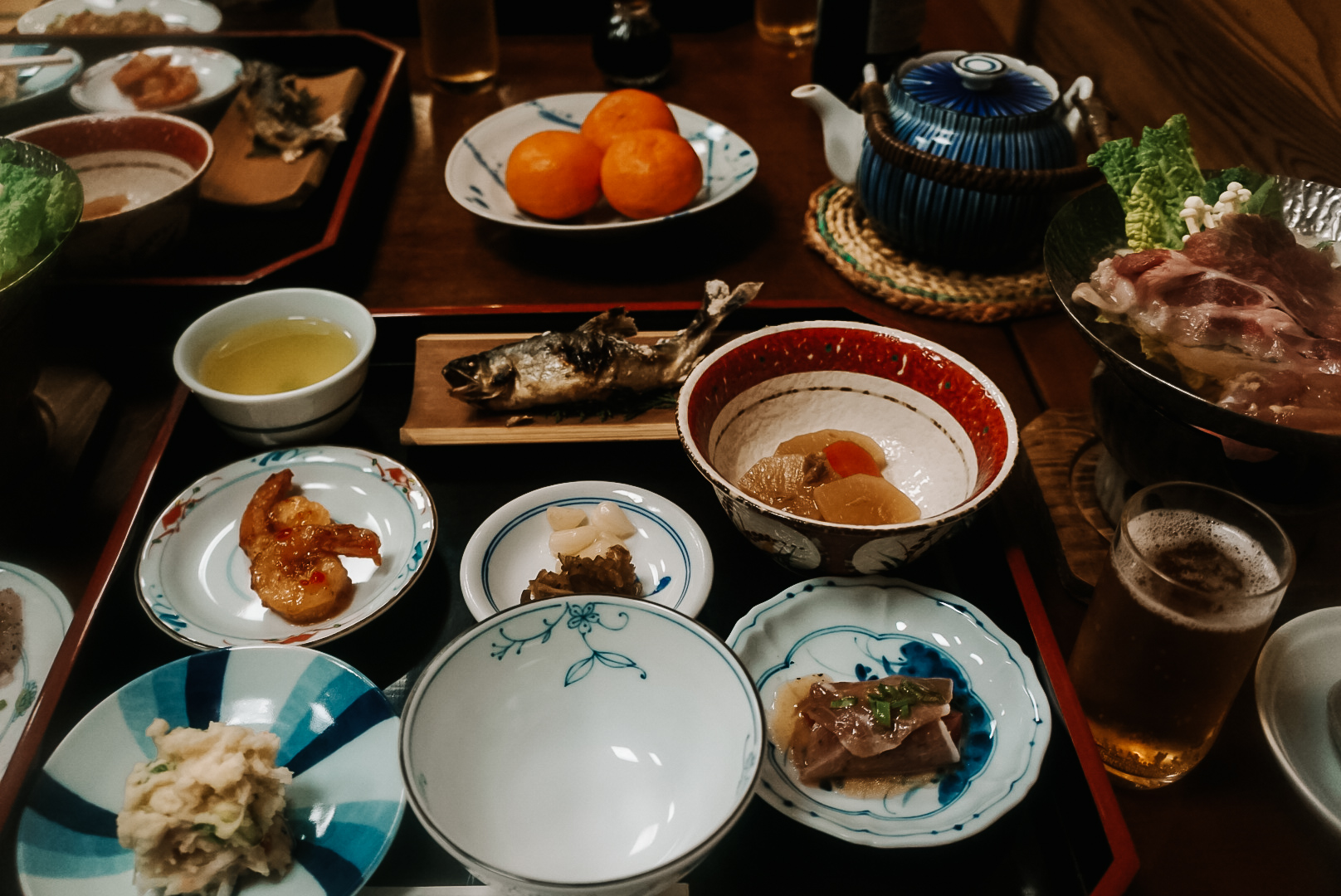
I stayed overnight in Minshuku Yamane, and can’t recommend it enough. the guesthouse features in-house hotspring bathes, and the dinner here will be one of the best you may have in Japan.
The owner is also the cutest oba-san (Japanese grandma), who made us feel like family in every way possible. I can’t recommend this place enough.
Day 4: Hike to Ohara
Distance Trekked: 21 km
Elevation Gained: 137 meters
Trekking Time: 8 hours (with stops)
Main Sites: Kumano Hongu Taisha, Oyunohara, Hyakken-gura Viewpoint & Jizo
Where to Stay: Sansaro Cafe & Guesthouse
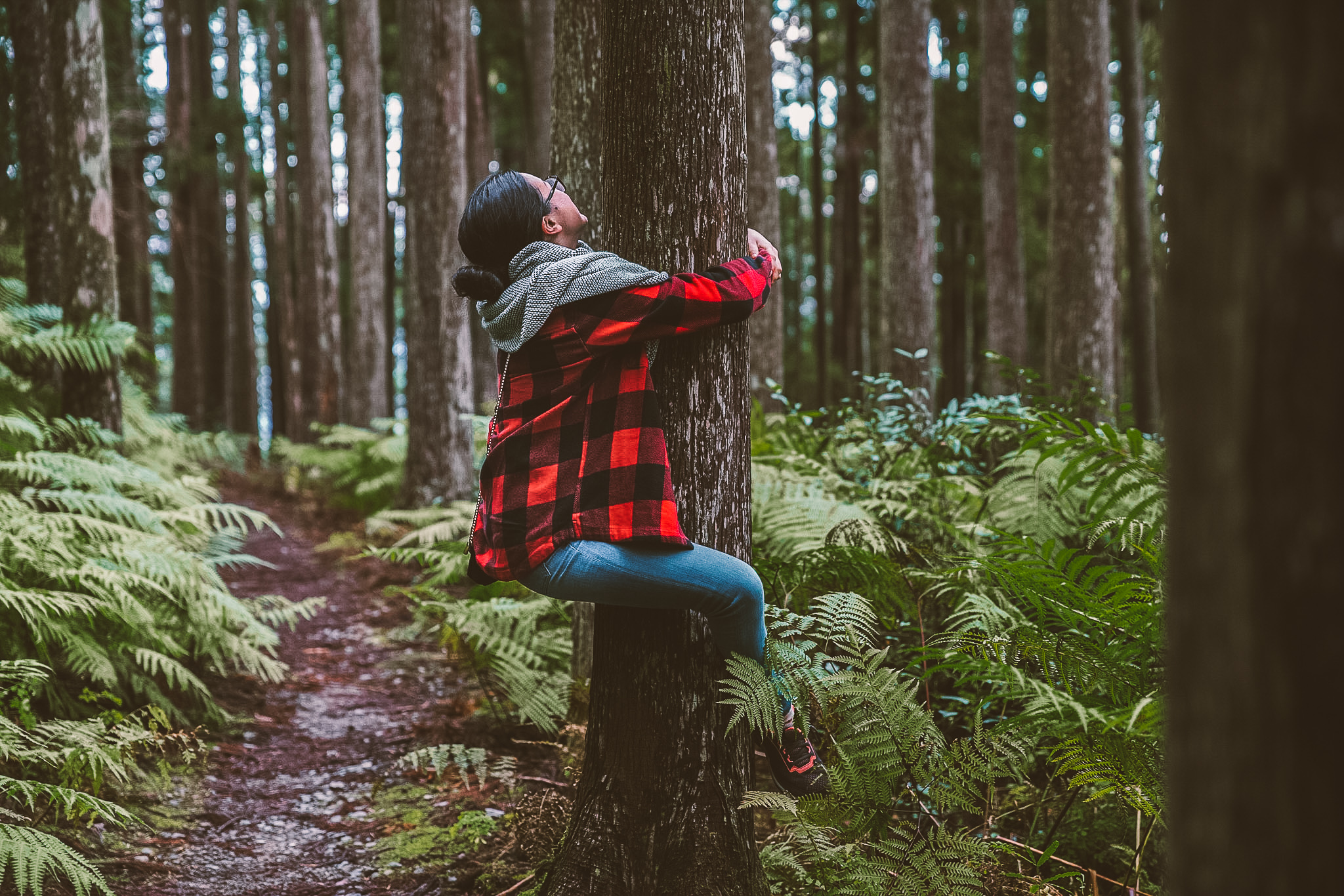
This is the easiest day of the trek, and arguably the best. Have a slow morning at Yunomine Onsen, before leaving for day 3.
You will have some steep stairs up, before a long descent until you reach the valley where Kumano Hongu Taisha is. You will pass through a very intriguing forest, with slick redwood trees. These trees look unlike any other I’ve ever seen, and you will stumble across an oji or two here as well.
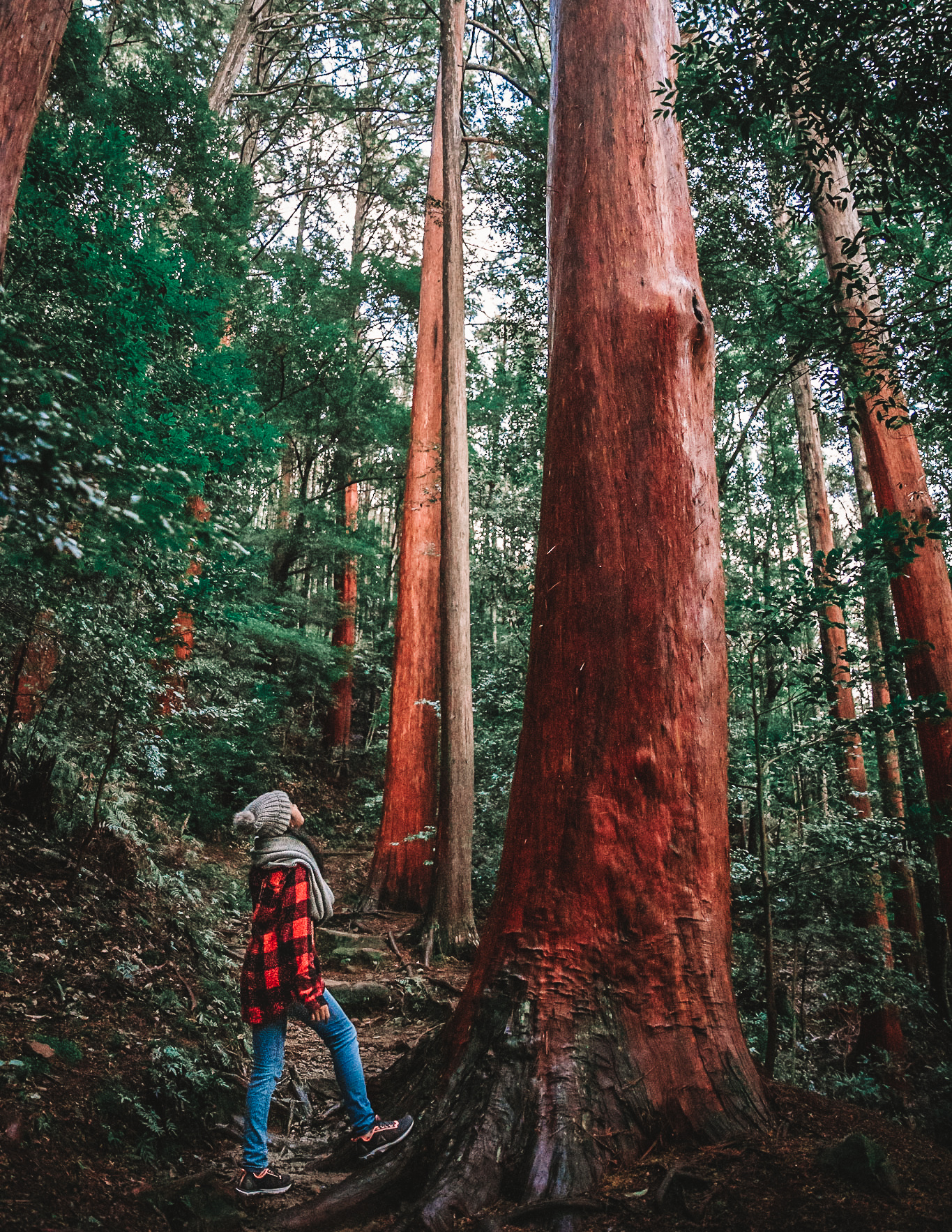
Once you reach the peak of the day, you will see Kumano Hongu Taisha peaking out from the valley beyond the many mountains. It’s an indescribably beautiful sight, one that was said to bring pilgrims to their knees in ancient times.
From here, it’s all downhill, until you reach the river valley.
Kumano Hongu Taisha
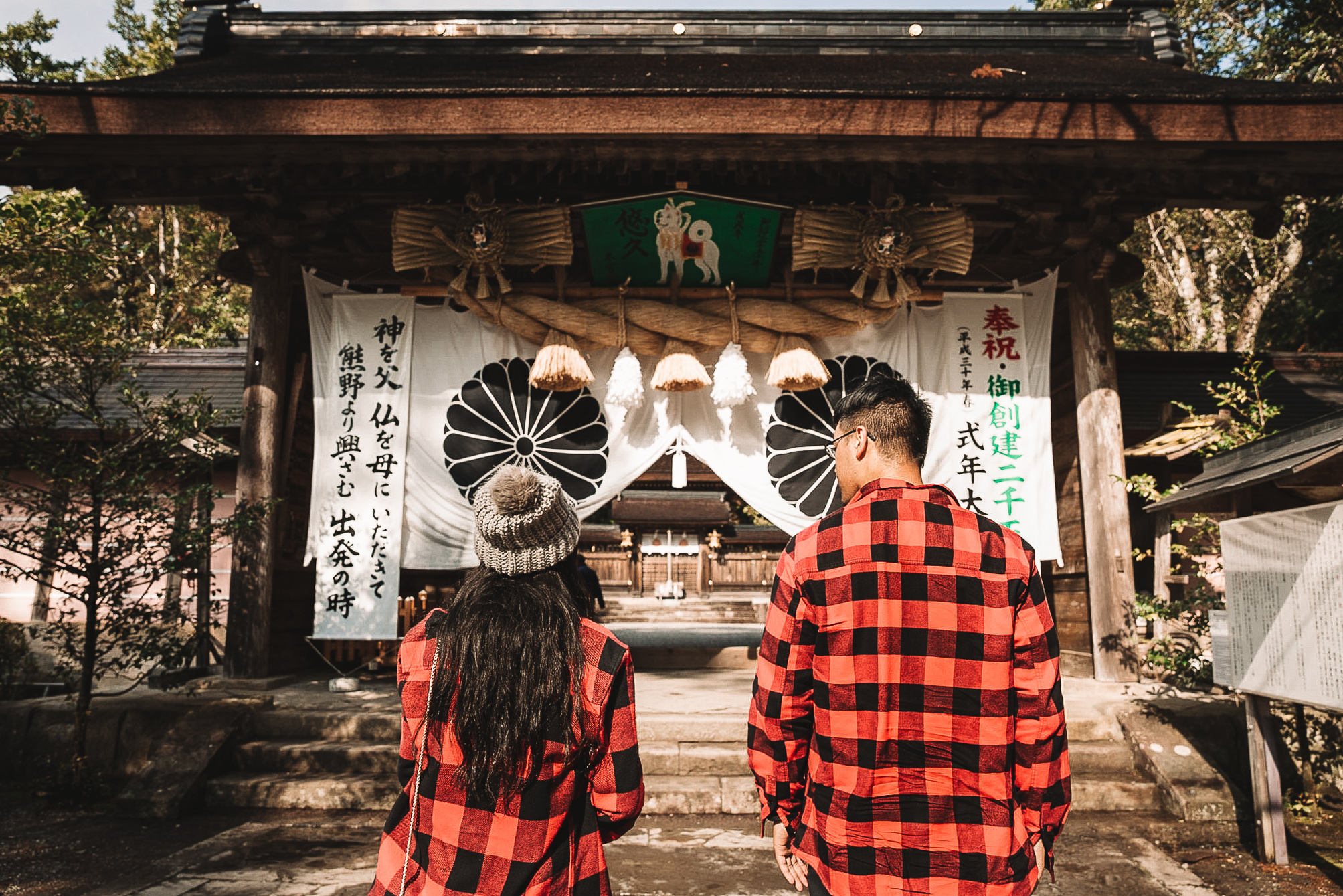
First, you will visit the Kumano Hongu Taisha, the most spiritually significant temple of the hike in Kumano Kodo. While in the temple, you may choose to buy a fortune teller. In recent years the Kumano Kodo has become popular enough that they now print fortunes in English.
Sadly mine said that this year was a good one to have a baby, so I promptly tossed mine out. But if you agree with your fortune, be sure to tie the paper to the fortune rack in the temple for good luck.
Oyunohara
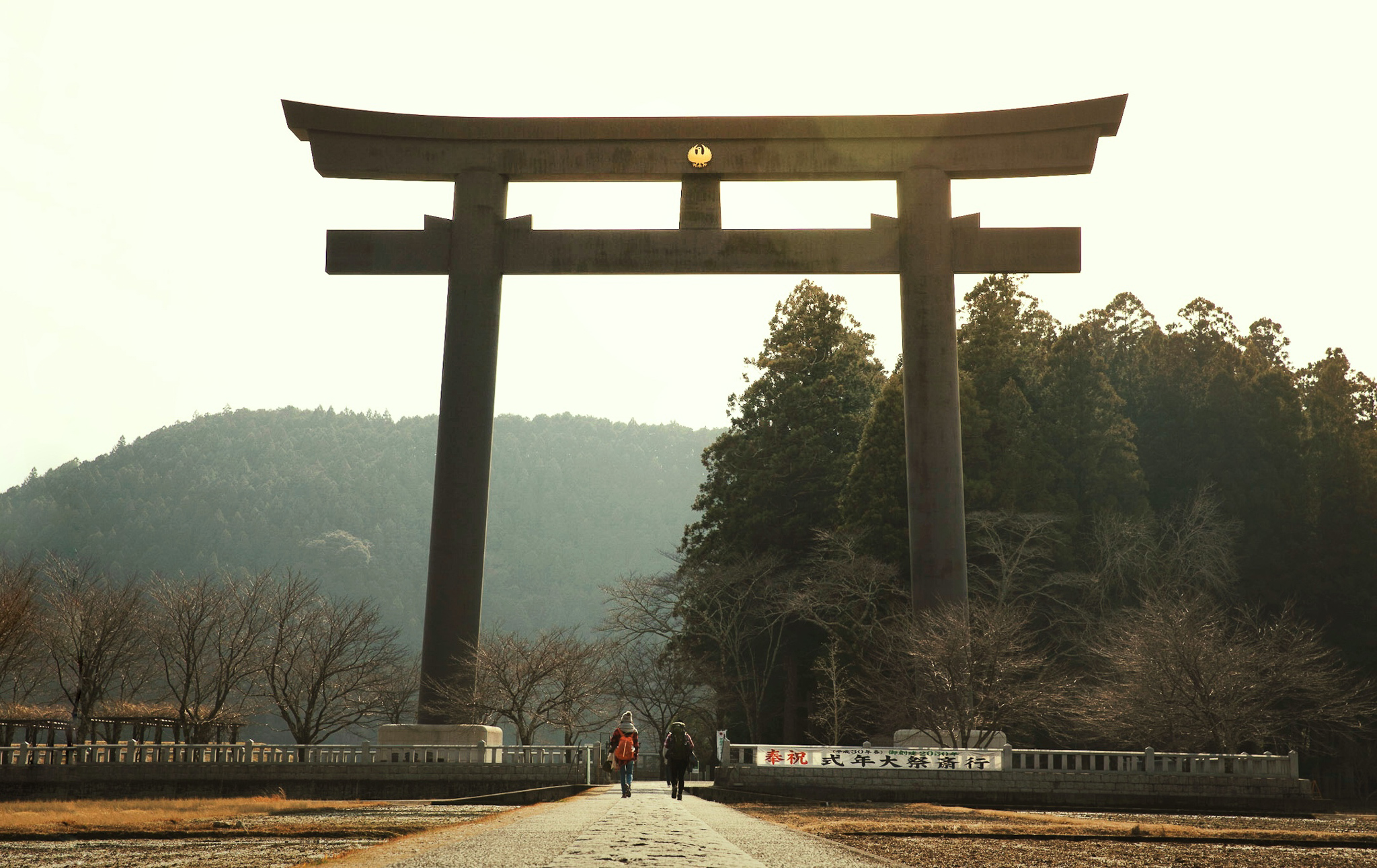
This is the site of the largest tori gate in all of Japan. It sits idyllically between two rivers, which join together on the southern facing side. In the past, this was the most significant part of the pilgrimage, with over 12 shrines making up the entire complex.
In Japanese culture, tori gates represent a window into the spirit world. There are various spiritual festivals that take place here, including a major one in the spring.
This festival involves waking up the Japanese deities, and carrying them around in a procession ceremony, until they are brought back to Oyunohara.
If you want to trek in Spring, you can try to catch this festival. It’s a fascinating insight into ancient customs of this religion and region.
Hyakken-gura
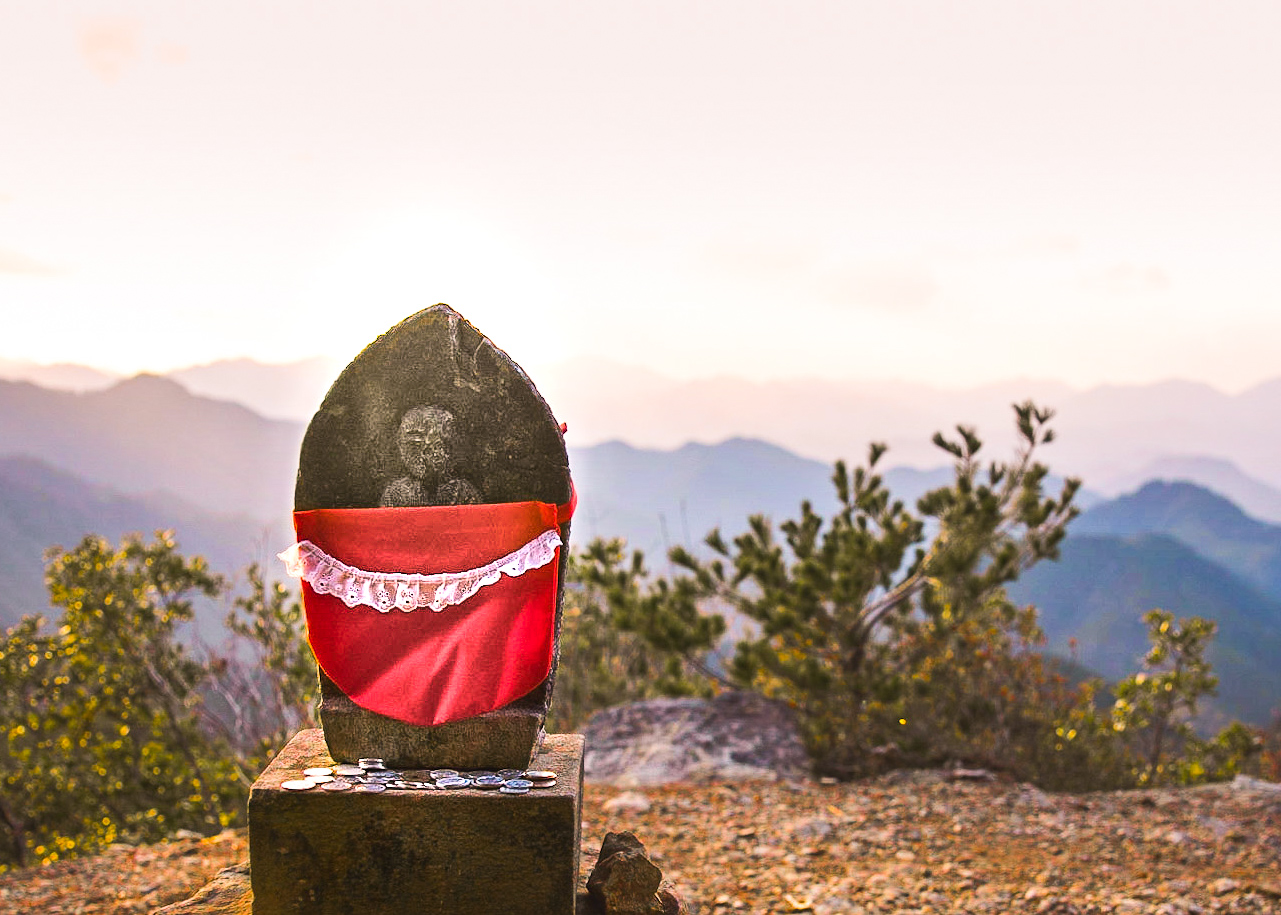
You will re-enter the forest shortly after Oyunohara, and walk for about an hour until reaching an iconic viewpoint of the hike in Kumano Kodo.
Here you have a lone jizo, perched over the side of the trail, with sprawling views of the endless mountains in the background. This view is breathtaking, and if you are a photographer, this will be a highlighted photo spot.
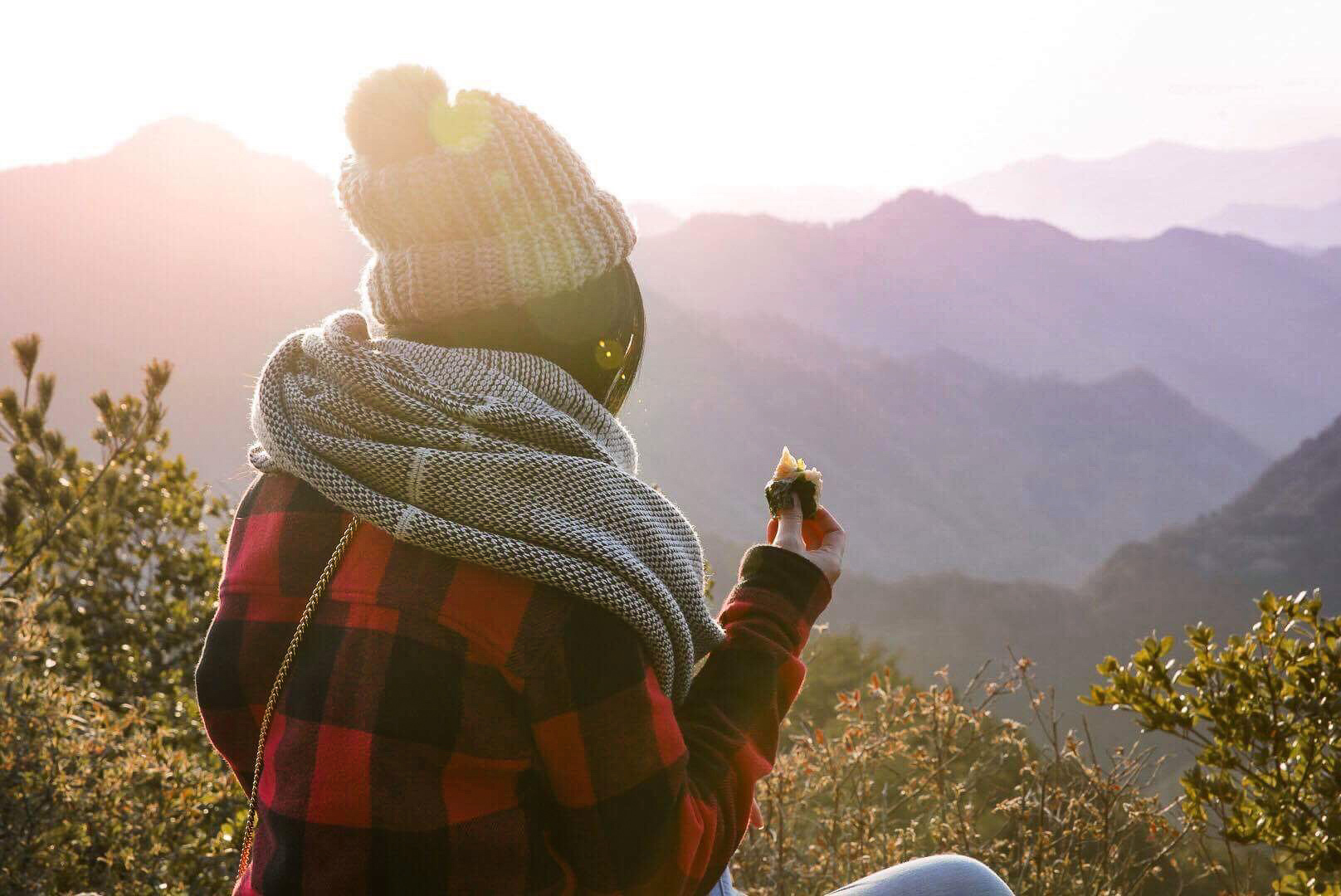
If you are comfortable with night-hiking, stay for sunset, when the mountains turning every shade of blue against a warm florescent sky.
Then, it’s a little over 2 hours of walking from Hyakken-gura to Ohara, where you’ll rest for the evening.
Day 5: Hike to Nachi Taisha the Waterfall Temple
Distance: 33 km
Elevation Gain: 1300 meters
Trekking Time: 11 hours (with stops)
Main Sites: Kumano Nachi Taisha, Hiro-jinja Shrine, Nachi Waterfall
Where to Stay: Hotel Charmant (in Katsuura)
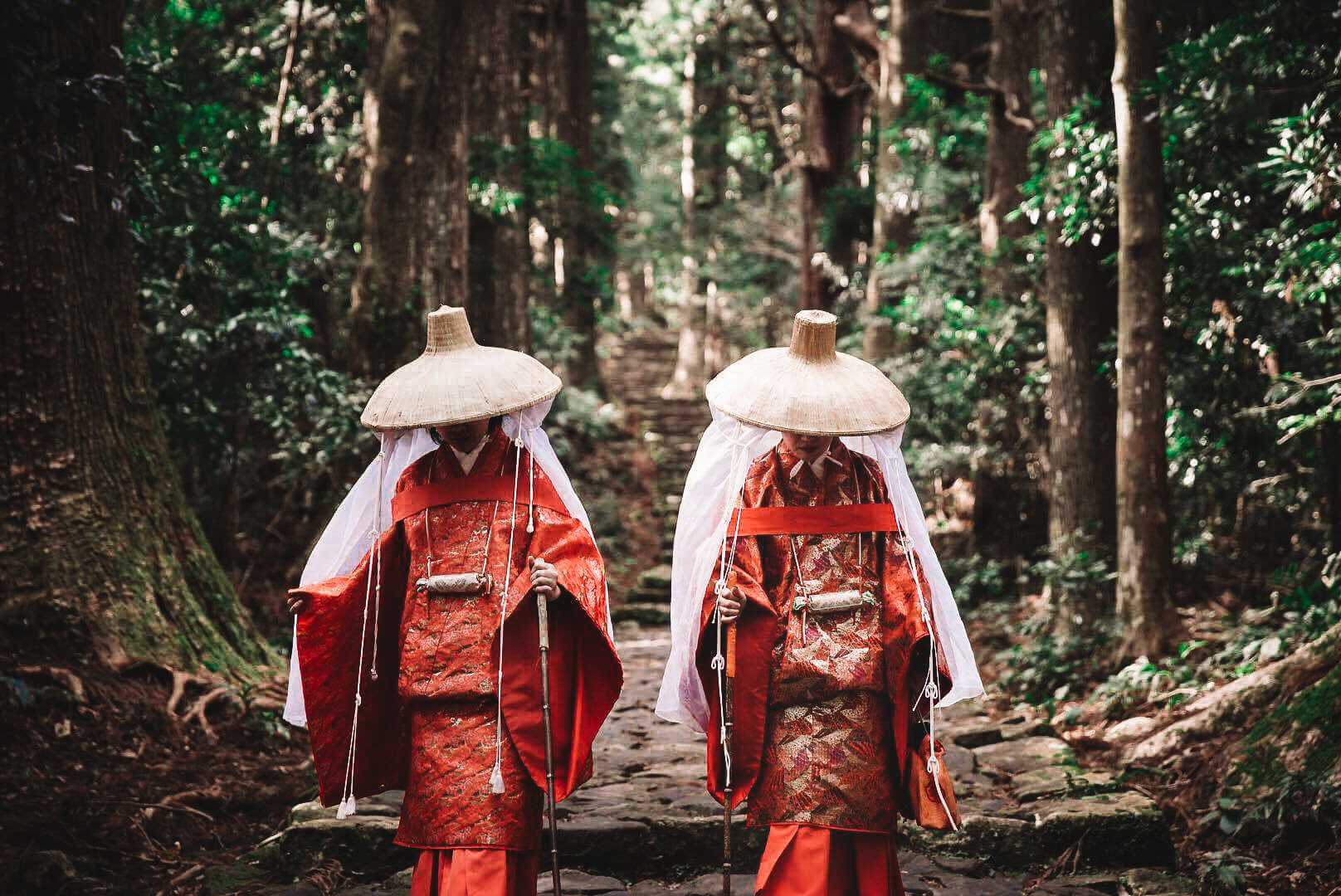
This is supposedly the most challenging day of the trek, likely due to the very steep incline through the Echizentoge pass. Japanese people have even given it the nickname “broken-leg mountain” due to the many injuries that happen on this stretch of the trail.
If you are visiting in winter, it can also be slippery due to ice. Feeling worried yet? So was I!
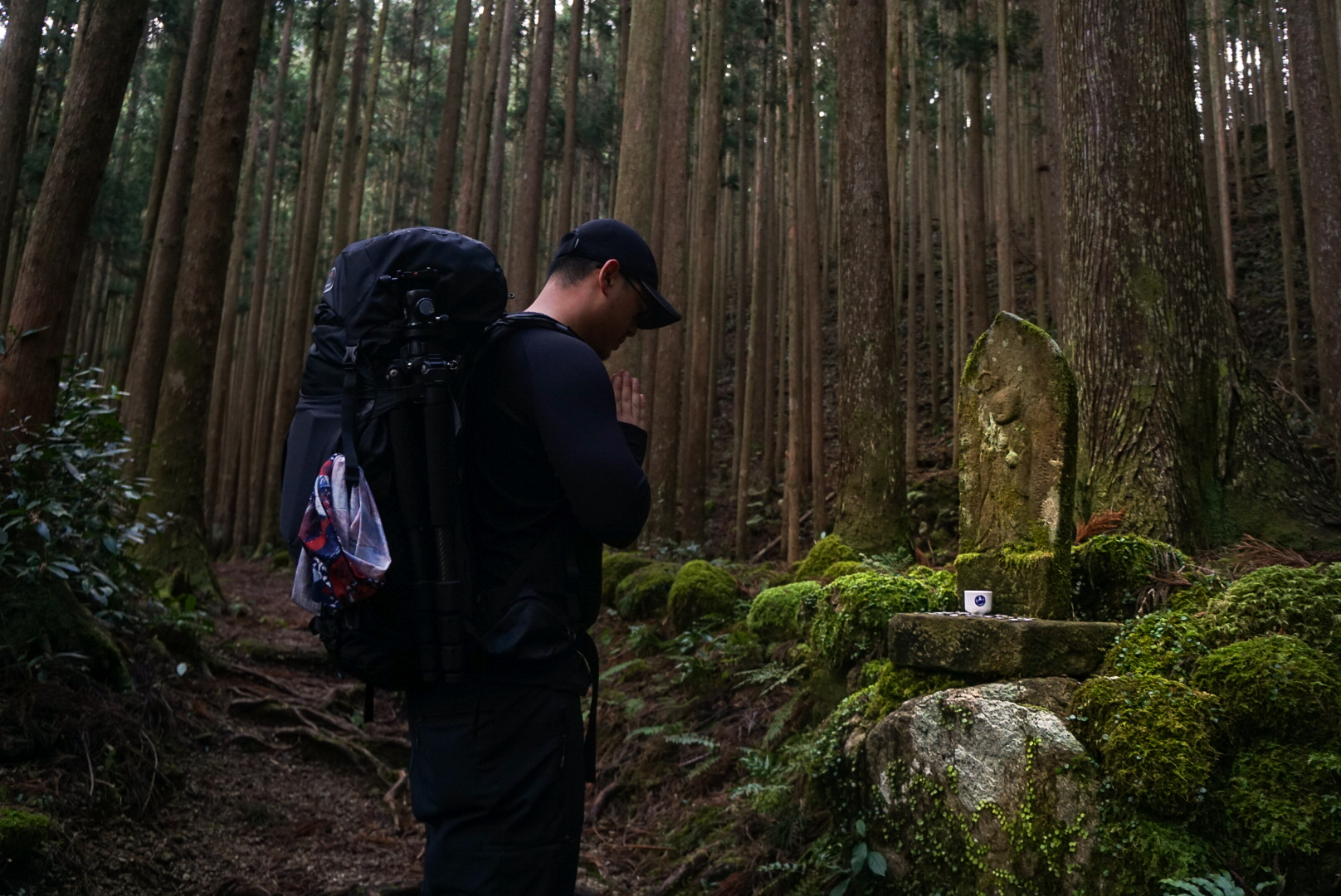
But don’t let this information scare you; I did not find this day to be nearly as difficult as it was rumored to be. It’s a very steep 800 meter incline to reach the top of the pass, so prepare for your glute muscles to cry for about 90 minutes. But after that it’s kind of smooth sailing and all downhill.
Before you begin your ascent up to the pass, you will pass a few more iconic ojis and sites.
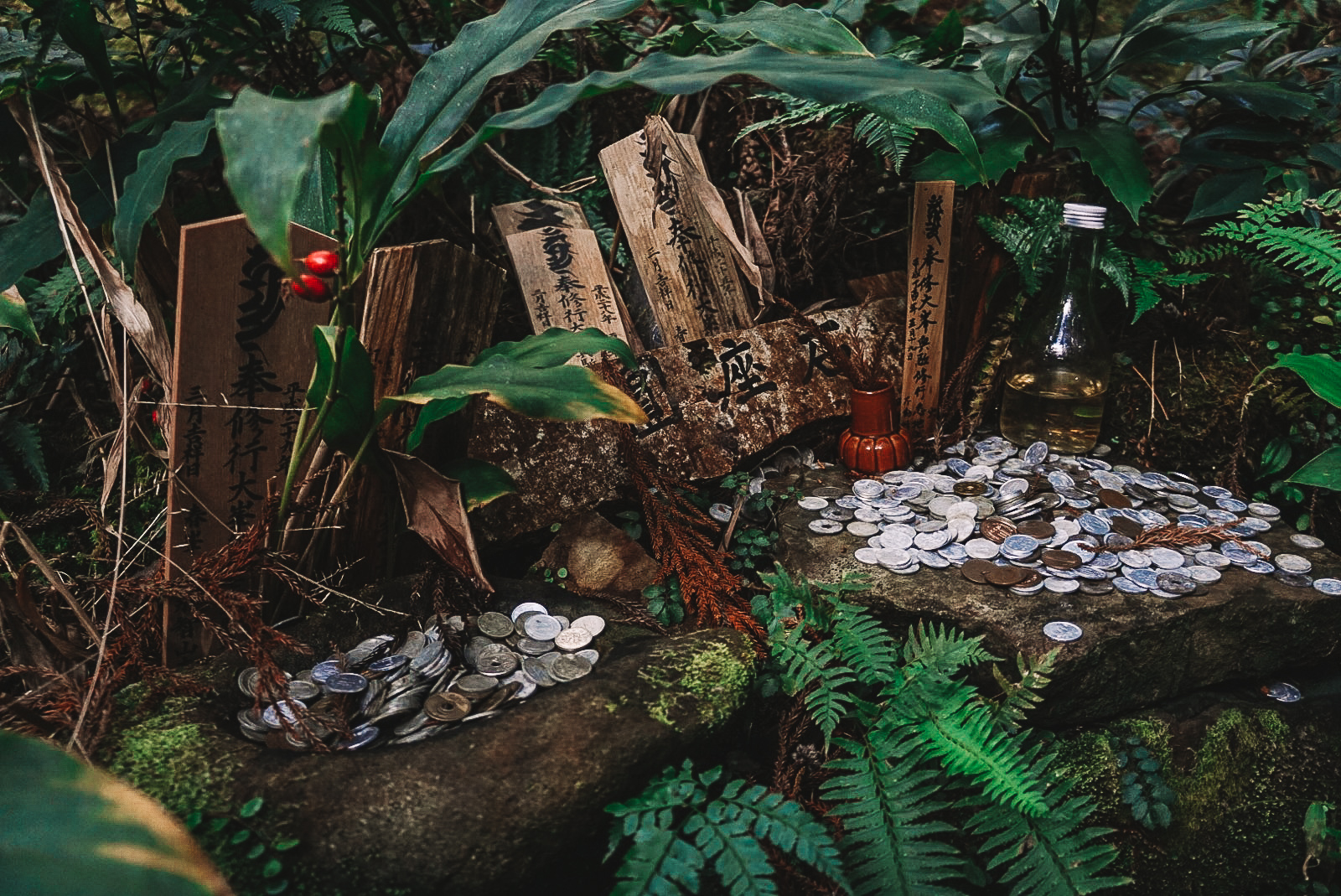
One of which is Waroda-ishi Rock, a sacred rock where legend says the deities of Kumano Kodo sat, as they drank sake.
When the final ascent starts, you will be deep in the forest, and walking through some very rough and rocky terrain. Try not to trip over the tree roots, or twist an ankle in one of the holes.
Once you reach the top of the pass, you will be at the highest point of the whole trek.
From there, it will be more or less a leisurely walk, taking you gradually down on your final descent, while passing the remains of historic teahouses.
After many hours of walking, you may get a peak of the ocean through the trees. This is when you know you are almost finished.
After seeing the ocean, you’ll just walk about an hour further on a gradually sloping trail.
I found this part of the hike enjoyable, as we had gorgeous lighting bathing the forest, creating little golden spotlights peeking through the trees. It was magical, especially since we were no longer hyperventilating and struggling to go uphill.
Once you hear falling water, you have arrived at your destination, and the end of the trek.
Kumano Nachi Taisha
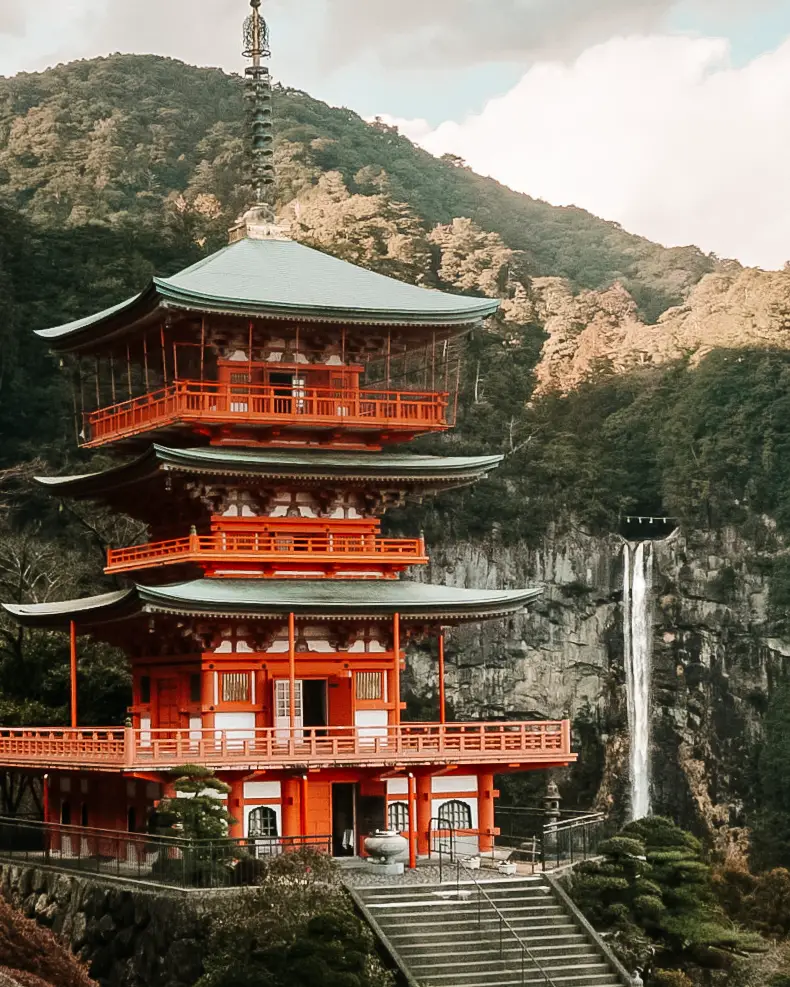
This temple is one of the three main temples of the pilgrimage, and possibly one of the most stunning you’ll ever see. The complex is large, with all buildings built and painted in the traditional vermillion red color.
The biggest attraction is the pagoda, which is set right against the cliff in front of the Nachi Waterfall.
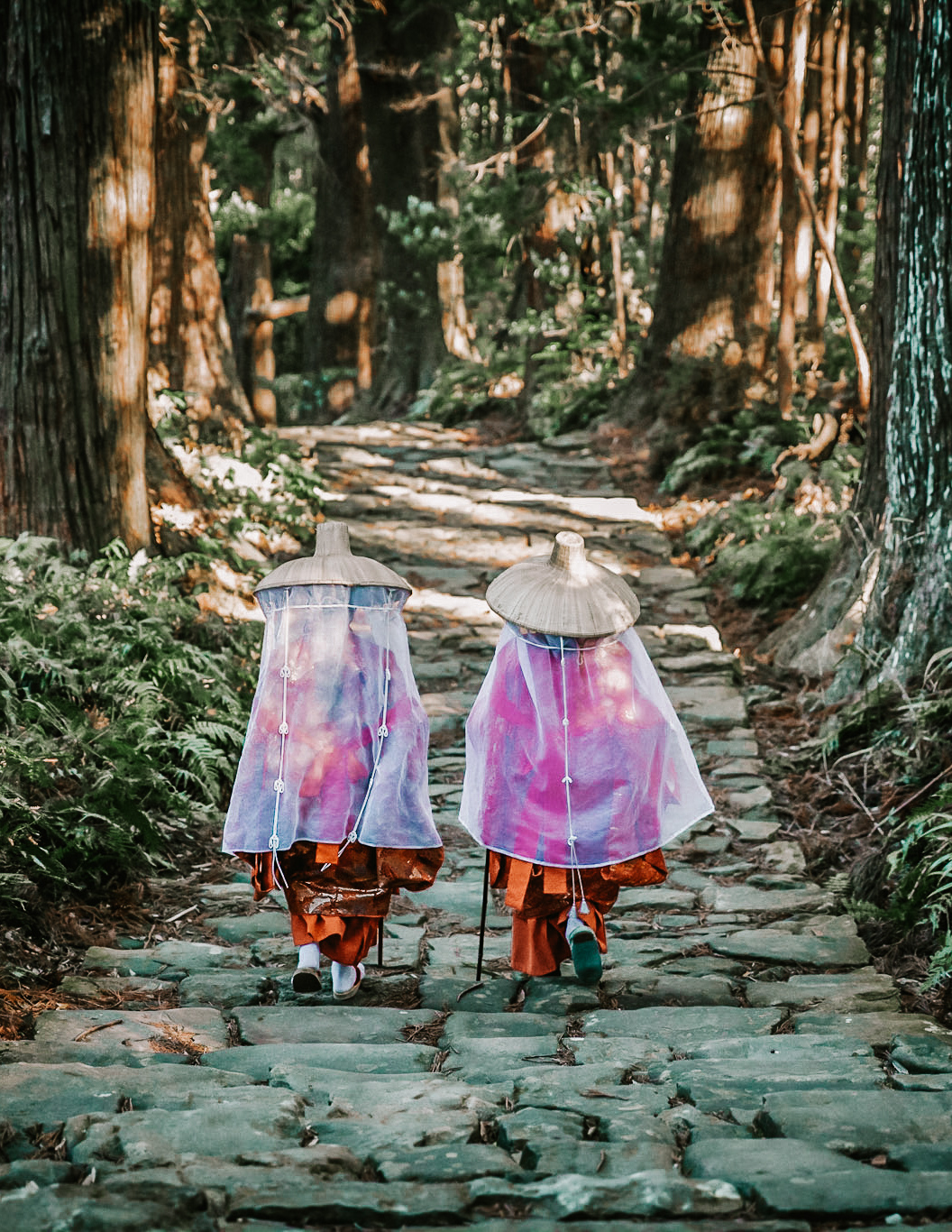
The waterfall is also the tallest one in Japan. It freefalls unobstructed from 133 meters into the basin below.
For the evening, take the bus to Katsuura nearby to spend the last night of the trip.
Day 6: Explore Katsuura
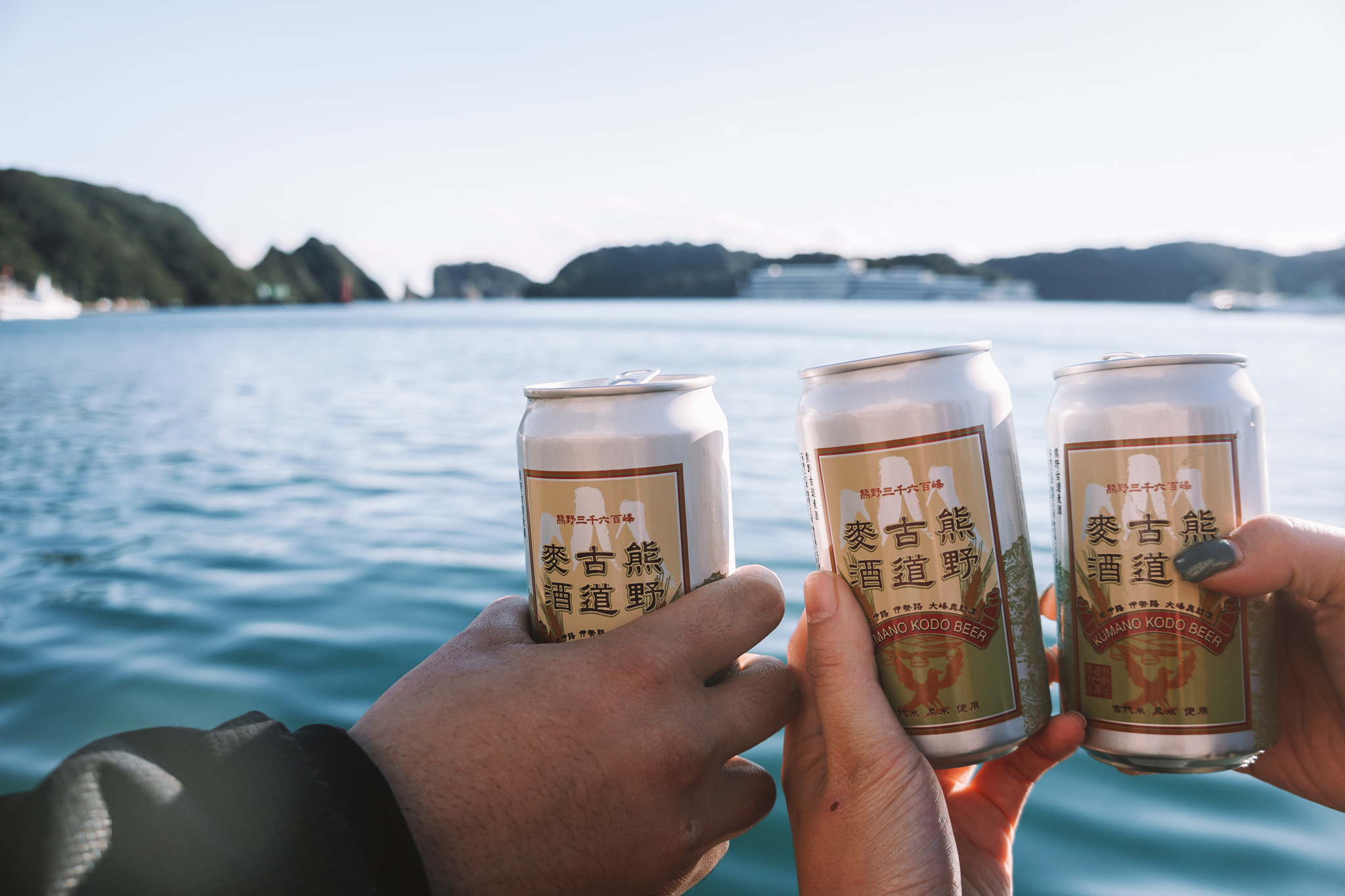
After you hike Kumano Kodo, you will really need a day of relaxing by the sea. So, your last day of this trip should involve exploring Katsuura, a Japanese coastal town with a thriving fishing port. Here you can explore the beaches, try seafood caught freshly that day, or go for a boat tour of the harbor. here are the best things not to miss in Katsuura.
Things to Do
Go for a Bay Cruise
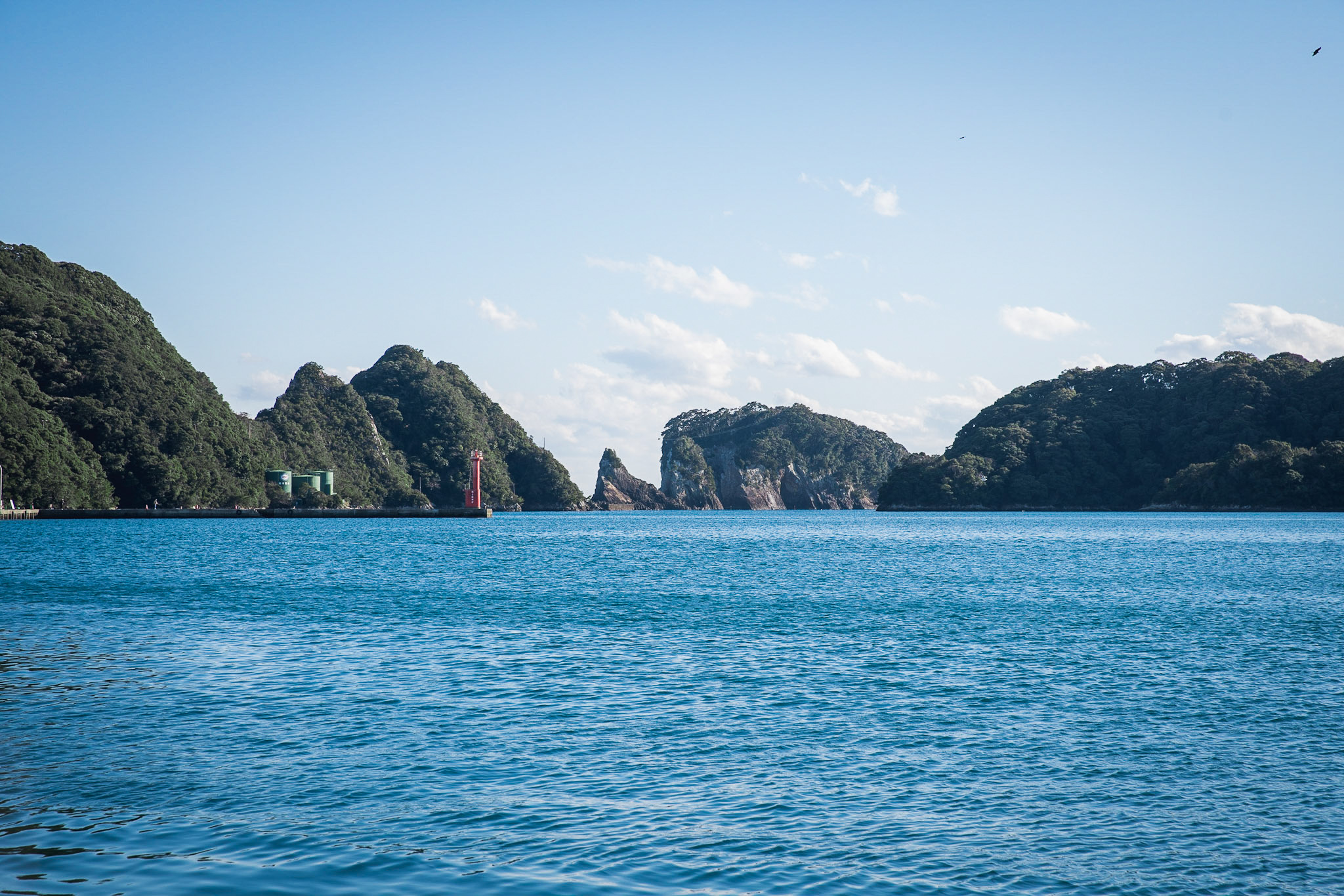
The entire coastal area of Katsuura is comprised of bays and little islands, which are considered a marine park in itself. A bay cruise is the best way to enjoy the scenic coastline from the water, and visit the smaller islands off shore. If you are lucky, you may even spot a pod of dolphins or a whale.
Attend the Fish Auction
Some travelers take intrigue in attending Japanese fish auctions. If you can wake up early enough, you can experience the excitement (or lack thereof) at the local tuna auction every morning at 7 AM, at the Katsuura Fish Market.
Outdoor Natural Onsens
Katsuura is home to a number of natural outdoor onsens. One of the most popular is Rakuda-no-Yu, also known as “Camel Rock”. This bath requires a short boat trip to reach, and is mixed gender. The best part? The view of the entire bay from the hotspring!
Tomisaki Shrine
You may feel burnt out from temples after trekking the Kumano Kodo, but if you aren’t, you could visit Tomisaki shrine. This shrine is located in the center of town, and holds an important place in the history of this area.
Eat Fresh Tuna
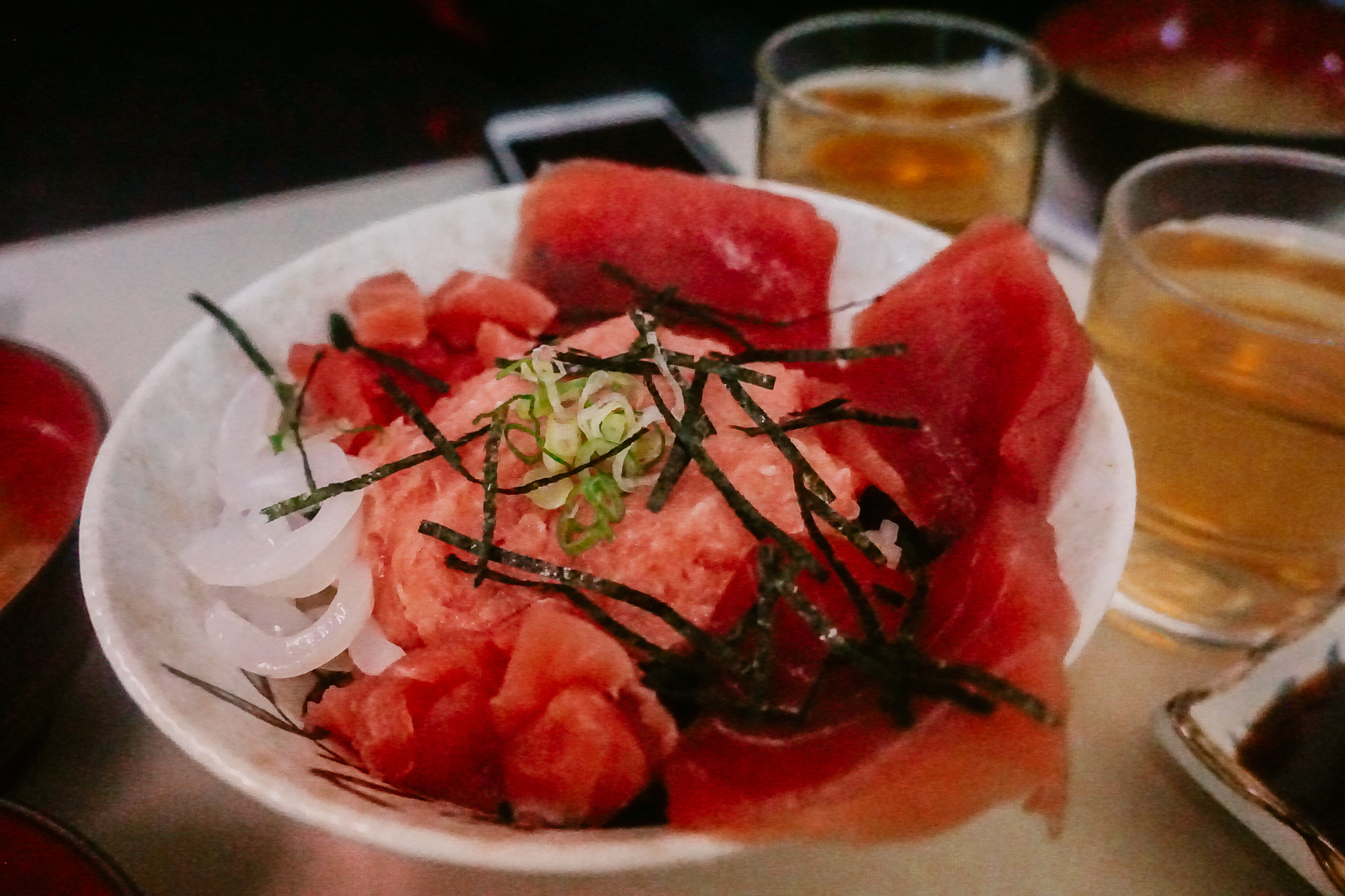
An absolute highlight of visiting Katsuura, is eating enough seafood to fulfill your hearts content. The most famous seafood from this city is bluefin tuna. In my opinion, the best way to enjoy it is as sashimi over rice. It’s so incredibly fresh, and a bit cheaper than in the bigger cities.
Katsuura Central Beach
If you are visiting in summer, you could even go for a swim since it will be warm enough. This beach also features a tori gate right on the beach, which makes an epic sunset photo spot.
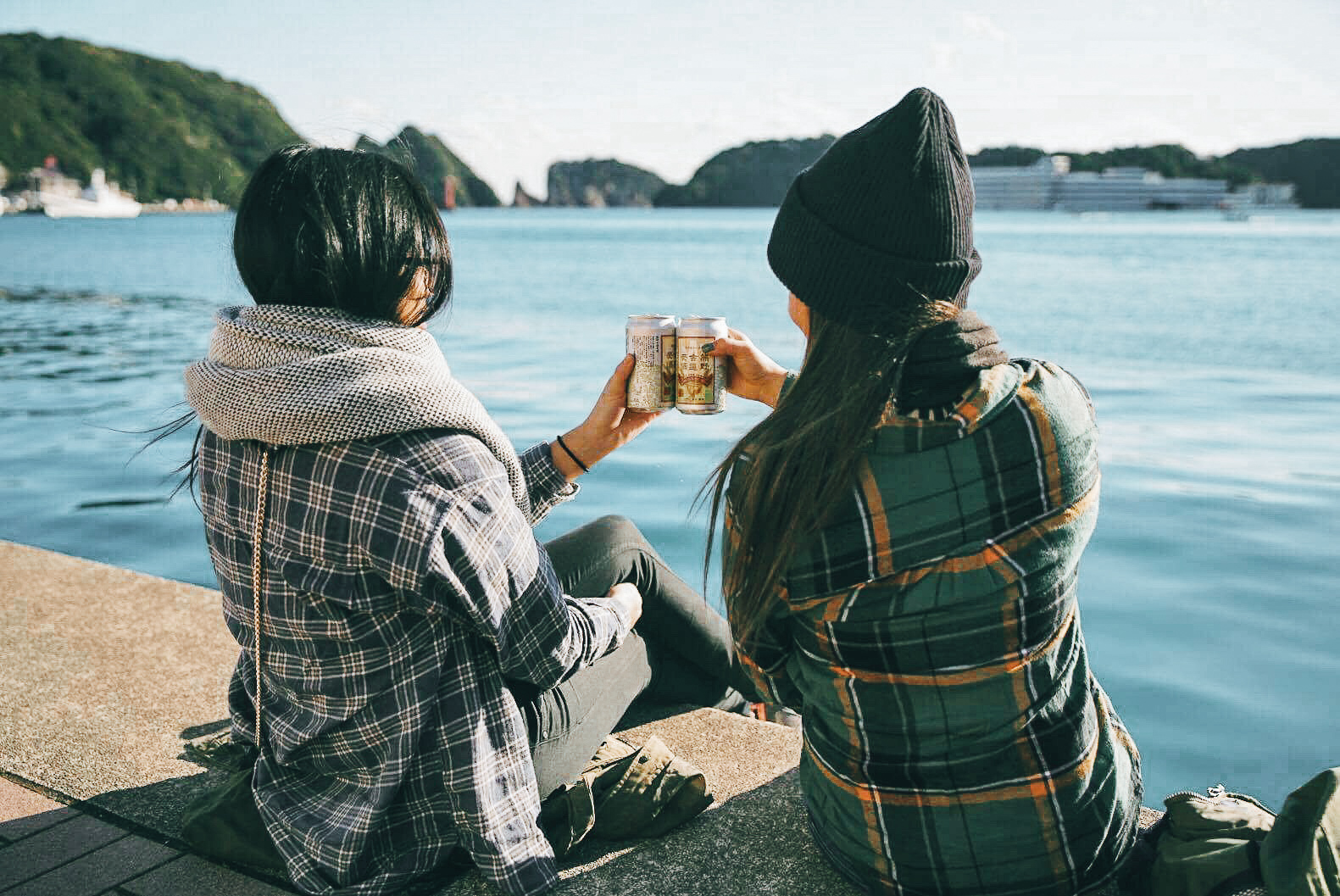
And there you have it! The complete guide on how to hike Kumano Kodo in Japan. This trek was one of the best experiences I’ve had not only in Japan, but in the world. It’s not to be missed.
What’s your favorite hike in the world? Let me know below!
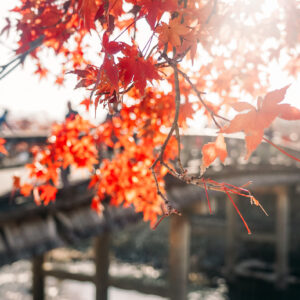 The Best Places in Kansai Japan in Autumn
The Best Places in Kansai Japan in Autumn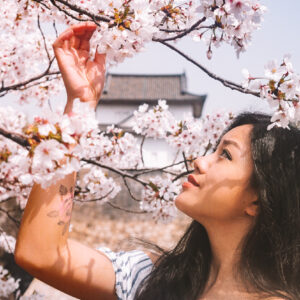 Japan Cherry Blossom Season 2023: Best Places to See Sakura
Japan Cherry Blossom Season 2023: Best Places to See Sakura How to Visit Shirakawa-go in Winter
How to Visit Shirakawa-go in Winter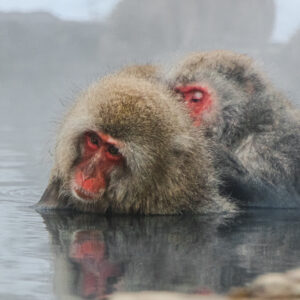 A Guide on Visiting Snow Monkeys in Japan
A Guide on Visiting Snow Monkeys in Japan


Wow! What an amazingly detailed post about Kumano Kodo! I’ve never heard of it, but the photos are absolutely beautiful, I definitely recognize the pagoda. If I ever visit, I will definitely follow this guide, you’ve covered everything!
Yeah the pagoda is definitely the most famous landmark of this trip. I can only imagine what the ancient pilgrims thought when they saw it for the first time
I don’t think I will ever be up for an intense hiking trip in Asia, but I know what to read now if I decide to do so in the future. What kind of hiking boots/shoes do you have? When I hiked up Mt Snowdon in Wales (an “easy” hike) I bought hiking shoes instead of boots, since I liked the freedom of movement it gave me and the lack of breaking in required.
Between you and I, I trekked the Kumano Kodo in running shoes and lived to tell the story! But for the post, I have to give the most practical advice. There are lot’s of streams to cross, and uneven terrain over large tree roots and boulders. Boots are ideal because they will support your ankles and keep your feet dry. The last thing you want is wet feet esp in winter. It’s a recipe for getting sick. A reliable brand for hiking boots is Salomon 🙂
This is great – I’ve only done the “popular” places in Japan like Tokyo. This makes me want to book a return trip!
Japan is definitely a place to travel more than once, there’s so much to see
Great blog post! Amazing amounts of history, nature and good practical information. Your photos are AWESOME!
Thanks! Had to make use of all that extra weight my camera gear added
How fascinating to hike the Kumano Kodo and know you are walking the path of pilgrims from ages past. Good to know the path is in decent shape these days to hike and accessible pretty much all year round. What an amazing variety in the things you saw along the way for 6 days.
Thanks!
This sounds like a fantastic and spiritual experience. I will definitely include it in my itinerary when I go back to Japan. I enjoyed a temple hike in Takayama a lot, hence, can imagine how immersive this experience must be. I also love how close you got to the local culture – which is not that easy in reserved Japan 😉
Oh, I love Takayama! I wonder if it’s the hike I’m thinking of, can’t remember the name, but I didn’t get to do it in the end. Anyway, if you were a fan of Takayama I know you’ll love Kumano Kodo.
Wow I didn’t know much about this and certainly didn’t know it was a world heritage site, but rightly so. What a fascinating history this trail has. Thank you for the detailed information on this, you have put Kumano Kodo on my radar for my future plans in Japan.
I had never hear of it until my second year in Japan either. Just makes me wonder what other amazing places am I yet to know even exist.
This online service provides a wide range of prescription drugs for ordering online.
Users can securely get health products with just a few clicks.
Our range includes standard drugs and more specific prescriptions.
The full range is sourced from verified providers.
https://community.alteryx.com/t5/user/viewprofilepage/user-id/574152
We prioritize user protection, with encrypted transactions and prompt delivery.
Whether you’re filling a prescription, you’ll find what you need here.
Explore our selection today and enjoy convenient access to medicine.
Did you know that 1 in 3 medication users commit preventable drug mistakes due to lack of knowledge?
Your wellbeing is your most valuable asset. All treatment options you implement plays crucial role in your quality of life. Being informed about medical treatments isn’t optional for optimal health outcomes.
Your health depends on more than taking pills. All pharmaceutical products interacts with your physiology in potentially dangerous ways.
Consider these essential facts:
1. Taking incompatible prescriptions can cause dangerous side effects
2. Even common supplements have strict usage limits
3. Self-adjusting treatment undermines therapy
For your safety, always:
✓ Verify interactions via medical databases
✓ Read instructions thoroughly prior to using any medication
✓ Consult your doctor about potential side effects
___________________________________
For professional drug information, visit:
https://vocus.cc/article/67fab261fd89780001e1db9c
The digital drugstore features a broad selection of pharmaceuticals for budget-friendly costs.
You can find all types of remedies for all health requirements.
We work hard to offer trusted brands at a reasonable cost.
Speedy and secure shipping guarantees that your medication gets to you quickly.
Enjoy the ease of ordering medications online with us.
silagra india
On this site showcases disc player alarm devices crafted by trusted manufacturers.
Visit to explore top-loading CD players with AM/FM radio and two alarm settings.
Most units come with aux-in ports, USB charging, and battery backup.
Available products covers affordable clocks to elite choices.
alarm-radio-clocks.com
All devices boast snooze functions, sleep timers, and digital displays.
Shop the collection using eBay with fast shipping.
Discover your ideal music and alarm combination for home or office use.
On this platform, you can access lots of casino slots from top providers.
Players can enjoy traditional machines as well as modern video slots with stunning graphics and exciting features.
Even if you’re new or an experienced player, there’s always a slot to match your mood.
play aviator
The games are available anytime and optimized for PCs and smartphones alike.
No download is required, so you can jump into the action right away.
Site navigation is intuitive, making it convenient to find your favorite slot.
Join the fun, and dive into the world of online slots!
Our platform features buggy rentals on Crete.
Visitors can conveniently rent a machine for travel.
In case you’re looking to discover coastal trails, a buggy is the fun way to do it.
https://www.reverbnation.com/buggycrete
All vehicles are regularly serviced and offered with flexible schedules.
Using this website is user-friendly and comes with no hidden fees.
Start your journey and feel Crete from a new angle.
Приобретение медицинской страховки во время путешествия — это необходимая мера для защиты здоровья гражданина.
Полис включает медицинскую помощь в случае обострения болезни за границей.
Помимо этого, документ может обеспечивать оплату на возвращение домой.
страховка автомобиля
Определённые государства настаивают на предъявление страховки для пересечения границы.
При отсутствии полиса обращение к врачу могут обойтись дорого.
Приобретение документа заранее
¡Hola aventureros de la fortuna !
ObtГ©n 100 giros gratis sin depГіsito 2025 y empieza el aГ±o con suerte. Nuevas promociones llegan con el nuevo aГ±o. ВЎNo te las pierdas!
Oferta de giros gratis por registro sin depГіsito EspaГ±a – 100 giros gratis sin depósito 2025.
¡Que tengas magníficas tiradas de suerte !
¡Hola expertos del azar !
Disfruta del mejor casino sin depГіsito en EspaГ±a. Solo regГstrate y activa tus giros gratis. Perfecto para empezar sin gastar.
Descubre todo lo que puedes ganar con 25 giros gratis sin depГіsito y sorprГ©ndete.
¡Que tengas magníficas jugadas !
¡Hola, apasionados de los juegos !
https://www.youtube.com/watch?v=DvFWSMyjao4
Aprovecha la promociГіn de casino 10 euros gratis y comienza a jugar sin riesgos. Esta oferta es ideal para quienes desean probar suerte sin comprometer su presupuesto. RegГstrate y descubre todo lo que el casino tiene para ofrecerte.
10 euros gratis en casino sin hacer ingreso – п»їhttps://www.youtube.com/watch?v=DvFWSMyjao4
¡Que tengas excelentes ganancias destacadas !
¡Hola cazadores de adrenalina !
Un casino sin registro te ahorra tiempo en cada sesiГіn. Puedes entrar y salir sin dejar huella. Muy prГЎctico y eficiente.
ВїQuieres empezar a jugar ya? Con casinos sin registro, no hay esperas ni formularios. [url=https://casinosinkyc.guru/#]casino sin registro[/url]Solo seleccionas tu juego y listo.
casino sin dni con bonos sin requisitos – http://casinosinkyc.guru/
¡Que tengas maravillosas logros sorprendentes !
¡Hola, participantes de los casinos !
Los nuevos jugadores reciben automГЎticamente 25 giros gratis sin depГіsito al confirmar su correo.
Aprovecha tiradas gratis por registro sin depГіsito ВЎsin riesgos! – п»їhttps://25girosgratissindeposito.xyz/
Juega desde el primer momento sin pagar un solo euro.ВЎDisponible para jugadores de EspaГ±a!
¡Que tengas excelentes giros afortunados !
Here, you can access a great variety of online slots from leading developers.
Players can experience traditional machines as well as modern video slots with stunning graphics and interactive gameplay.
Whether you’re a beginner or an experienced player, there’s something for everyone.
no depisit bonus
All slot machines are available round the clock and optimized for laptops and tablets alike.
You don’t need to install anything, so you can start playing instantly.
Platform layout is user-friendly, making it convenient to browse the collection.
Register now, and dive into the world of online slots!
本站 提供 多样的 成人内容,满足 成年访客 的 兴趣。
无论您喜欢 什么样的 的 视频,这里都 种类齐全。
所有 资源 都经过 严格审核,确保 高清晰 的 视觉享受。
拜物教
我们支持 多种设备 访问,包括 手机,随时随地 畅享内容。
加入我们,探索 无限精彩 的 两性空间。
¡Hola, exploradores del azar !
Las casas apuestas sin licencia cuentan con una amplia oferta de juegos en vivo para quienes disfrutan de la adrenalina en tiempo real. [url=п»їhttps://apuestas-sin-licencia.net/]casa apuestas sin licencia en espaГ±a[/url] AdemГЎs, sus plataformas suelen tener menos latencia y mejores interfaces. Esto mejora la experiencia del jugador significativamente.
Casas de apuestas sin licencia en EspaГ±a con sistema rГЎpido de retiro – http://apuestas-sin-licencia.net/
Algunas casas de apuestas sin licencia en España permiten apuestas desde tan solo 0,10€, ideal para empezar sin riesgo.
¡Que disfrutes de victorias inolvidables !
The Piguet 15300 st combines precision engineering and sophisticated aesthetics. Its 39mm steel case guarantees a contemporary fit, striking a balance between presence and wearability. The distinctive geometric bezel, secured by eight hexagonal screws, epitomizes the brand’s innovative approach to luxury sports watches.
https://www.tumblr.com/sneakerizer/784514036592214016/a-timeless-legacy-the-audemars-piguet-royal-oak
Featuring a applied white gold indices dial, this model incorporates a 60-hour energy reserve via the Caliber 3120 movement. The signature textured dial adds dimension and character, while the 10mm-thick case ensures understated elegance.
The Audemars Piguet Royal Oak 15400ST is a stainless steel timepiece launched as a modern classic of the legendary Royal Oak collection.
Crafted in 41mm stainless steel is framed by an angular bezel accented with eight iconic screws, defining its sporty-chic identity.
Driven by the self-winding Cal. 3120, guarantees seamless functionality including a subtle date complication.
https://telegra.ph/Audemars-Piguet-Royal-Oak-15400ST-An-Unconventional-Deep-Dive-06-02
A sleek silver index dial with Grande Tapisserie highlighted by luminous appliqués for clear visibility.
Its matching steel bracelet offers a secure, ergonomic fit, finished with an AP folding clasp.
A symbol of timeless sophistication, this model remains a top choice among luxury watch enthusiasts.
Audemars Piguet’s Royal Oak 15450ST boasts a
9.8mm thick case and 50-meter water resistance, blending luxury craftsmanship
The watch’s timeless grey hue pairs with a stainless steel bracelet for a refined aesthetic.
The automatic movement ensures seamless functionality, a hallmark of Audemars Piguet’s engineering.
Introduced in the early 2010s, the 15450ST complements the larger 41mm 15400 model, catering to slimmer wrists.
Available in multiple color options like blue and white, it suits diverse tastes while retaining the collection’s signature aesthetic.
https://www.tumblr.com/sneakerizer/784512797388292096/audemars-piguet-royal-oak-15450st-the-quiet
The dial showcases a black Grande Tapisserie pattern enhanced by luminescent markers for clear visibility.
Its matching steel bracelet combines elegance with resilience, secured by a hidden clasp.
Renowned for its iconic design, it continues to captivate collectors among luxury watch enthusiasts.
¿Buscas promocódigos recientes de 1xBet? En nuestra plataforma encontrarás bonificaciones únicas para apostar .
El promocódigo 1x_12121 garantiza a un bono de 6500 rublos durante el registro .
También , activa 1XRUN200 y obtén una oferta exclusiva de €1500 + 150 giros gratis.
https://fernandoxysm55433.fliplife-wiki.com/4032090/descubre_cómo_usar_el_código_promocional_1xbet_para_apostar_gratis_en_argentina_méxico_chile_y_más
Mantente atento las novedades para acumular más beneficios .
Los promocódigos listados están actualizados para hoy .
¡Aprovecha y maximiza tus apuestas con la casa de apuestas líder !
¡Hola, entusiastas de los juegos de azar !
[url=п»їhttps://casinofueradeespana.xyz/]casino fuera de espaГ±a[/url]
Casino online fuera de espaГ±a con promociones exclusivas para mГіviles – https://casinofueradeespana.xyz
Los casinos fuera de EspaГ±a se enfocan en ofrecer experiencias fluidas sin interrupciones. La estabilidad del servidor es prioridad. AsГ puedes jugar sin preocupaciones tГ©cnicas.
¡Que disfrutes de ganancias excepcionales !
Лицензирование и сертификация — ключевой аспект ведения бизнеса в России, обеспечивающий защиту от непрофессионалов.
Обязательная сертификация требуется для подтверждения безопасности товаров.
Для 49 видов деятельности необходимо получение лицензий.
https://ok.ru/group/70000034956977/topic/158831172171953
Игнорирование требований ведут к штрафам до 1 млн рублей.
Дополнительные лицензии помогает повысить доверие бизнеса.
Соблюдение норм — залог успешного развития компании.
where to buy clomid pill where can i buy generic clomid price cost of clomiphene at cvs cost of cheap clomiphene without rx order generic clomiphene online cheap clomid online clomid prices
world pharmacy store discount number: chloramphenicol pharmacy – online pharmacy australia free delivery
¡Bienvenidos, visitantes de portales de apuestas !
Casino por fuera permite mГєltiples cuentas para distintos juegos o monedas. Eso te da mГЎs organizaciГіn. [url=http://casinoonlinefueradeespana.xyz]casino fuera de espaГ±a[/url] Todo bajo control.
Casino fuera de espaГ±a: apuesta sin fronteras y con confianza – https://casinoonlinefueradeespana.xyz/
ВїFanГЎtico de las apuestas en vivo? Casino por fuera ofrece eventos con menor latencia y mГЎs mercados disponibles. Esta inmediatez mejora tu estrategia al apostar.
¡Que vivas tiradas exitosas !
sildenafil 30 mg: VGR Sources – cost of viagra 100mg
viagra cost [url=https://vgrsources.com/#]generic sildenafil 20 mg[/url] how much is viagra uk
sildenafil tablets where to buy: VGR Sources – viagra online canada paypal
https://vgrsources.com/# sildenafil otc europe
sildenafil tablets online in india: female version of viagra – where to buy viagra over the counter uk
safe buy viagra online: VGR Sources – where to buy cheap generic viagra
buy viagra australia online [url=https://vgrsources.com/#]generic viagra in the usa[/url] viagra 500mg online
sildenafil india purchase: VGR Sources – buy viagra paypal
viagra pills online purchase: VGR Sources – sildenafil tablets where to buy
pharmacy viagra generic: VGR Sources – generic viagra canada paypal
can i purchase viagra over the counter in canada: VGR Sources – buy viagra free shipping
https://vgrsources.com/# viagra pills generic brand
generic viagra lowest price: generic viagra canadian pharmacy – viagra super active online
where can u buy viagra: viagra by phone – where can i buy viagra cheap
viagra for sale no prescription: VGR Sources – buy generic viagra in india
viagra soft tabs: VGR Sources – sildenafil 48 tabs 50 mg price
viagra uk pharmacy: VGR Sources – sildenafil 100mg order
https://vgrsources.com/# where to get female viagra over the counter
generic viagra online from india [url=https://vgrsources.com/#]VGR Sources[/url] buying sildenafil citrate online
viagra price malaysia: VGR Sources – how much is viagra over the counter
20 mg generic sildenafil: VGR Sources – cheapest generic viagra australia
where can i buy viagra without a prescription: viagra 100 mg price canada – sildenafil coupon 100mg
otc viagra 2018 [url=https://vgrsources.com/#]VGR Sources[/url] sildenafil nz pharmacy
sildenafil canada: sildenafil 100mg gel – viagra in india online purchase
sildenafil 20 mg for sale: compare prices sildenafil – safe generic viagra
where can i order viagra online in canada: how to buy generic viagra – viagra 2019
viagra capsule price in india [url=https://vgrsources.com/#]real female viagra[/url] viagra 100mg online buy
https://vgrsources.com/# male viagra
sildenafil citrate women: VGR Sources – generic viagra from mexico
sildenafil sale uk: VGR Sources – buy viagra online without prescription
generic viagra online canadian pharmacy: where can i get viagra in canada – how to safely order viagra online
cheapest generic viagra australia: us over the counter viagra – get a viagra prescription online
sildenafil tablets 100mg online: VGR Sources – female viagra 100mg tablet price in india
sildenafil tabs 20mg [url=https://vgrsources.com/#]VGR Sources[/url] how much do viagra cost
https://vgrsources.com/# viagra cream australia
generic sildenafil soft tabs: female viagra 18 – buy viagra over the counter
where to buy viagra over the counter: otc viagra pills – where can you buy viagra over the counter in uk
female viagra 50 mg: viagra online ordering – female viagra price india
Обязательная сертификация в России критически важна для защиты прав потребителей, так как блокирует попадание опасной или некачественной продукции на рынок.
Система сертификации основаны на федеральных законах , таких как ФЗ № 184-ФЗ, и регулируют как отечественные товары, так и импортные аналоги .
стоимость исо 9001 Сертификат соответствия гарантирует, что продукция прошла тестирование безопасности и не повлияет негативно людям и окружающей среде.
Кроме того сертификация усиливает конкурентоспособность товаров на глобальной арене и упрощает к экспорту.
Развитие системы сертификации отражает современным стандартам, что обеспечивает стабильность в условиях технологических вызовов.
cost of viagra 100mg in australia: VGR Sources – sildenafil generic price uk
sildenafil 25 mg: how to viagra prescription – how can i get viagra
where to get viagra in canada: VGR Sources – viagra price pharmacy
where to get generic viagra online [url=https://vgrsources.com/#]VGR Sources[/url] where can you get female viagra
Explore detailed information about the Audemars Piguet Royal Oak Offshore 15710ST on this site , including price trends ranging from $34,566 to $36,200 for stainless steel models.
The 42mm timepiece showcases a robust design with automatic movement and rugged aesthetics, crafted in stainless steel .
Used Audemars Piguet Royal Oak Offshore 15710 price
Check secondary market data , where limited editions command premiums , alongside vintage models from the 1970s.
Get real-time updates on availability, specifications, and investment returns , with free market analyses for informed decisions.
https://vgrsources.com/# viagra 100 mg price in usa
generic viagra soft tablets: buy sildenafil 20 mg tablets – best price for real viagra
sildenafil 20 mg over the counter: VGR Sources – viagra tablets
sildenafil where to get: VGR Sources – viagra without presc uk
online generic viagra prescription: VGR Sources – buy sildenafil 200mg
sildenafil generic costs: VGR Sources – generic viagra price canada
viagra coupons [url=https://vgrsources.com/#]VGR Sources[/url] sildenafil 100mg paypal
viagra online generic canada: VGR Sources – women viagra pills
https://vgrsources.com/# best generic viagra brand
sildenafil citrate tablets: viagra fast delivery usa – viagra canada pharmacy
cialis vs viagra: VGR Sources – viagra soft 100mg
sildenafil cost compare: VGR Sources – sildenafil purchase
sildenafil 100 coupon [url=https://vgrsources.com/#]VGR Sources[/url] pfizer online viagra
generic viagra 50: generic viagra 50mg online – cheap viagra online free shipping
PredniPharm: prednisone 20 mg pill – Predni Pharm
lipitor and crestor [url=https://lipipharm.com/#]Lipi Pharm[/url] Lipi Pharm
CrestorPharm: rosuvastatin calcium 10 mg cost – what fruit to avoid when taking crestor?
https://crestorpharm.shop/# Crestor Pharm
Safe delivery in the US: SemagluPharm – SemagluPharm
Semaglu Pharm: SemagluPharm – FDA-approved Rybelsus alternative
Predni Pharm [url=https://prednipharm.shop/#]prednisone canada prescription[/url] prednisone buying
SemagluPharm: Semaglu Pharm – Safe delivery in the US
Lipi Pharm: Lipi Pharm – Lipi Pharm
alcohol crestor: Crestor Pharm – CrestorPharm
FDA-approved generic statins online: pill identifier atorvastatin 20 mg – lipitor hair loss
Buy cholesterol medicine online cheap [url=https://crestorpharm.shop/#]Affordable cholesterol-lowering pills[/url] Safe online pharmacy for Crestor
Where to buy Semaglutide legally: Semaglu Pharm – what supplements not to take with semaglutide
Predni Pharm: prednisone 20mg price in india – Predni Pharm
CrestorPharm: Crestor 10mg / 20mg / 40mg online – CrestorPharm
LipiPharm: Online statin drugs no doctor visit – Online statin drugs no doctor visit
http://prednipharm.com/# PredniPharm
CrestorPharm: CrestorPharm – Best price for Crestor online USA
Online pharmacy Rybelsus [url=http://semaglupharm.com/#]Semaglu Pharm[/url] Safe delivery in the US
prednisone best price: prednisone for sale – prednisone buy online nz
п»їBuy Lipitor without prescription USA: lipitor substitute – can you cut lipitor in half
Affordable cholesterol-lowering pills [url=https://crestorpharm.shop/#]Crestor Pharm[/url] Crestor Pharm